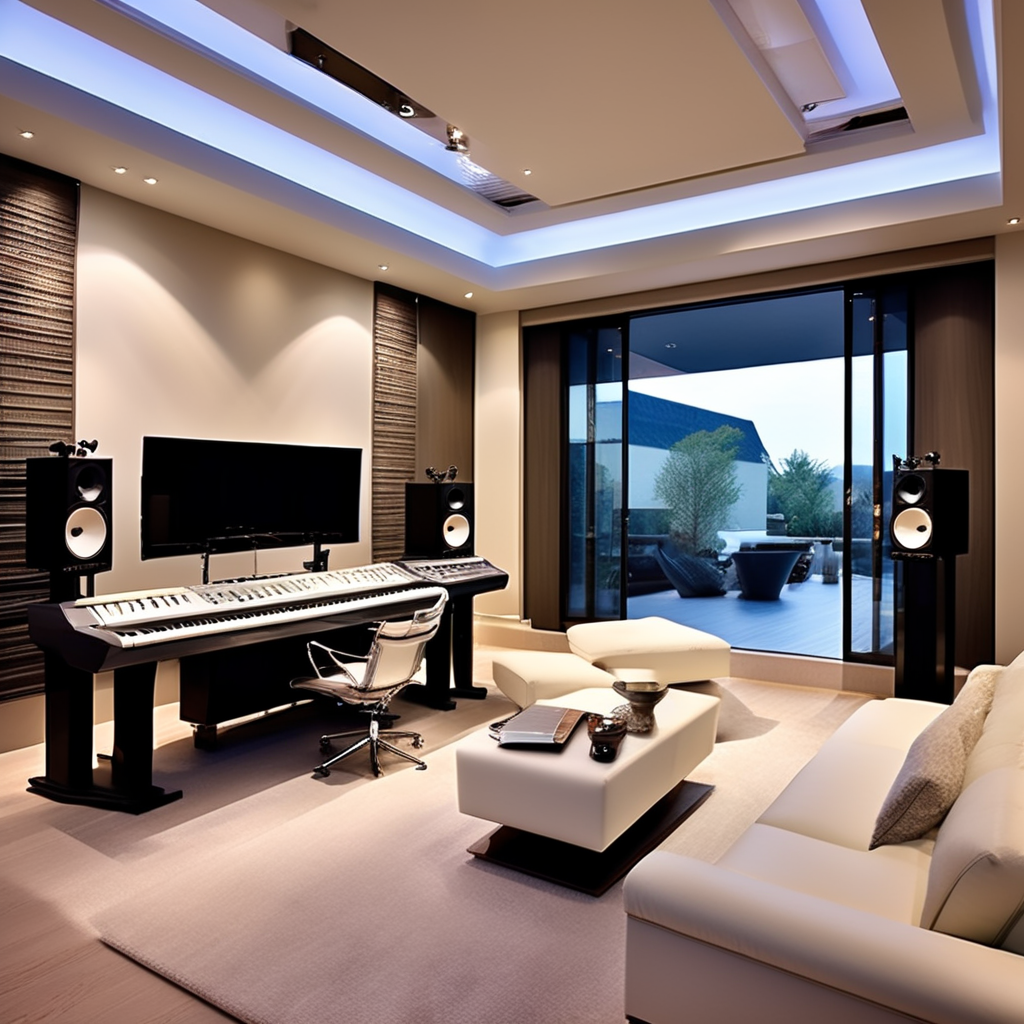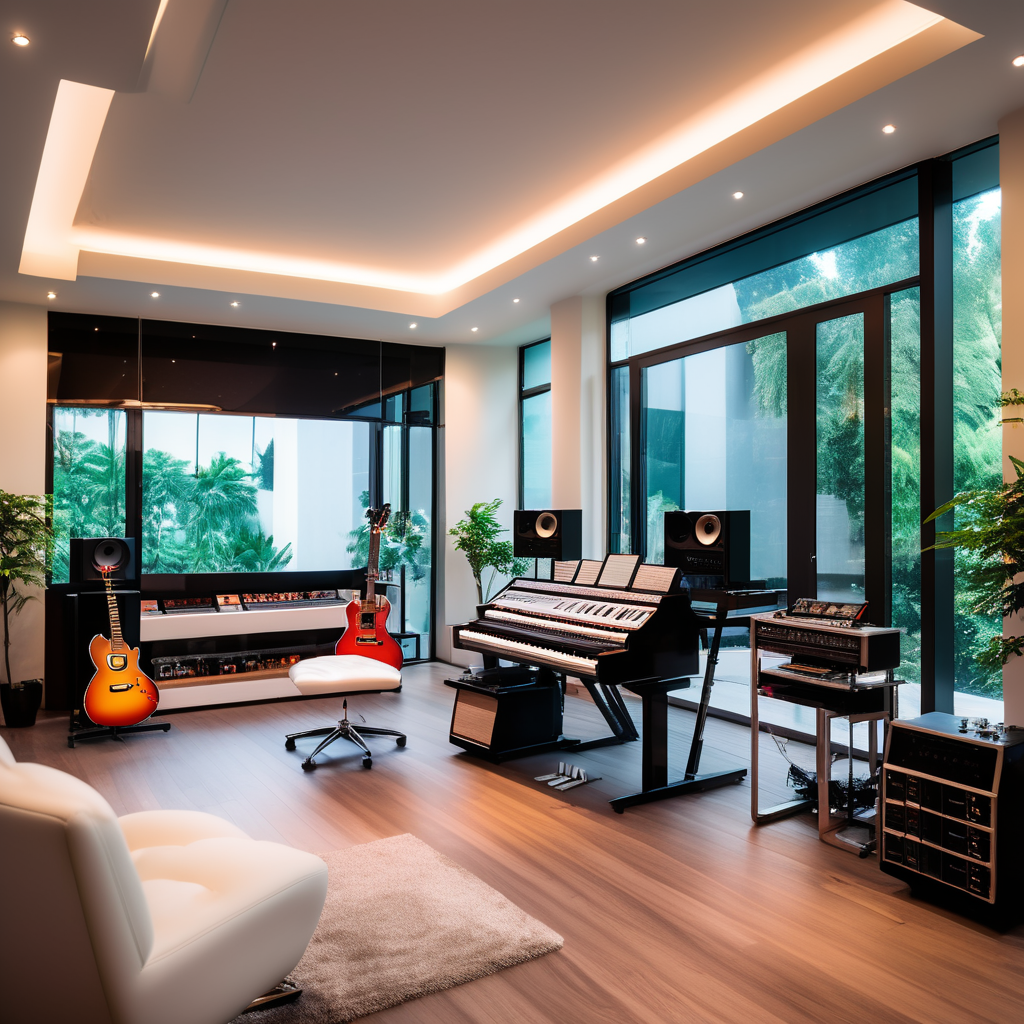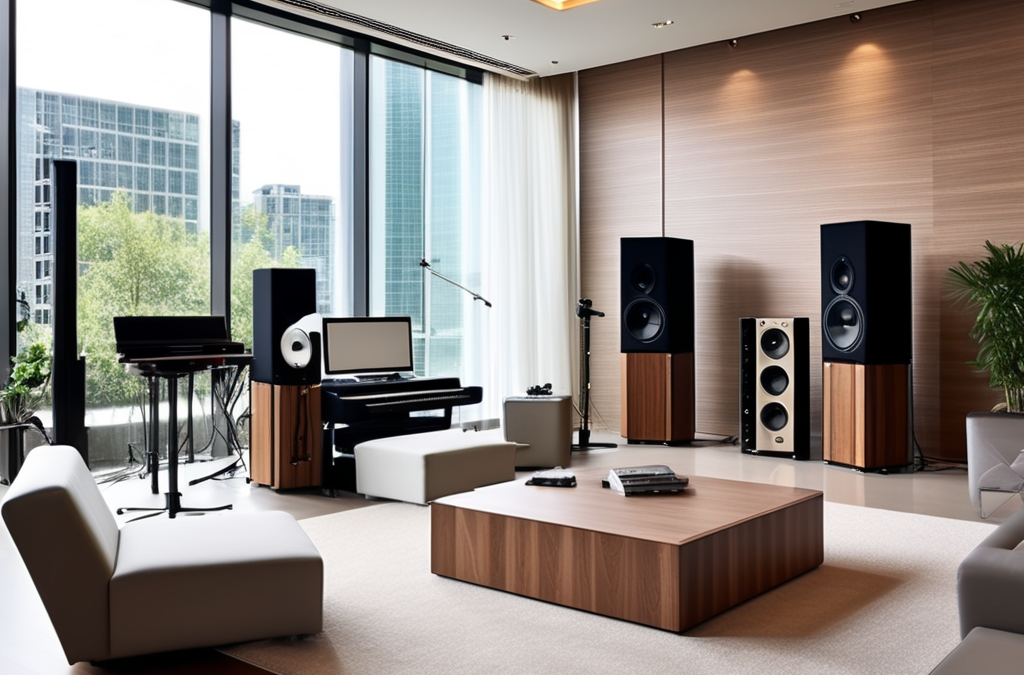Welcome to the world of Perfect Music Studio Interior, where creativity comes to life and melodies take shape! Designing the perfect interior for your music studio is an art, blending aesthetics with functionality to create a space that inspires and enhances your musical journey. Whether you’re a professional musician or a passionate hobbyist, crafting the ultimate music studio environment can make all the difference in unlocking your creative potential.
This blog post will delve into the key elements of music studio design and explore innovative ideas that can transform your space into a haven for artistic expression. From creating the perfect sound environment to balancing aesthetics with practicality, we will guide you through designing an exceptional music studio interior.
So, let’s dive in and discover how to craft an inspiring sanctuary where melodies come alive and imagination soars! Explore how interior design principles can enhance your musical experience within these sacred walls. Get ready to unleash your creativity as we embark on this enchanting journey into the realm of music studio interiors.
Designing the Ultimate Music Studio Interior
Designing the ultimate music studio interior is all about creating a space that reflects your unique style and enhances your musical creativity. One of the critical elements to consider is the layout of your studio. Think about how you want to arrange your equipment, instruments, and seating areas to promote efficiency and productivity.
Lighting is another crucial aspect to focus on. Opt for adjustable lighting options that allow you to set different moods depending on the type of music you’re working on. Dimmers or color-changing LED lights can add an extra ambiance and inspiration to your studio.
When it comes to colors and aesthetics, choose a palette that resonates with your musical genre or personal taste. Bold, vibrant tones can energize the space for genres like pop or rock, while softer hues may be more fitting for classical or acoustic setups.
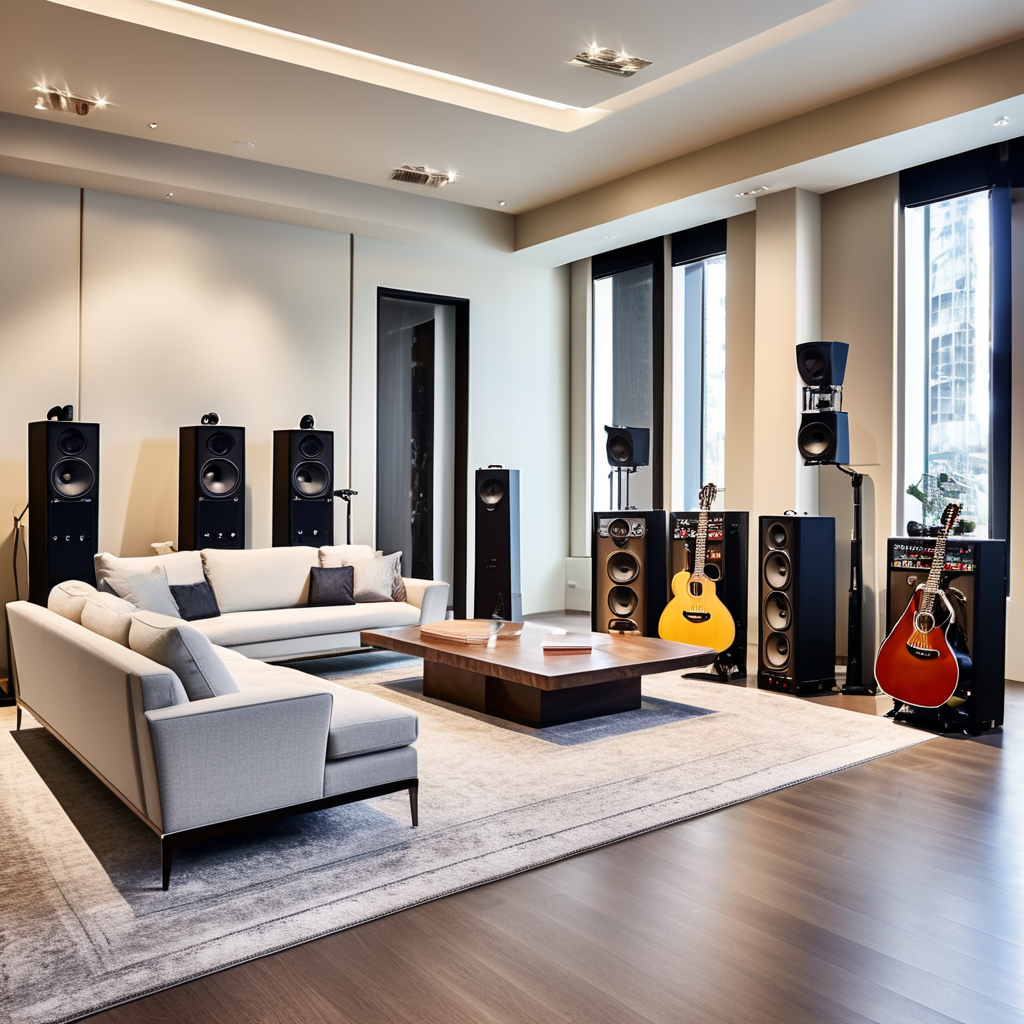
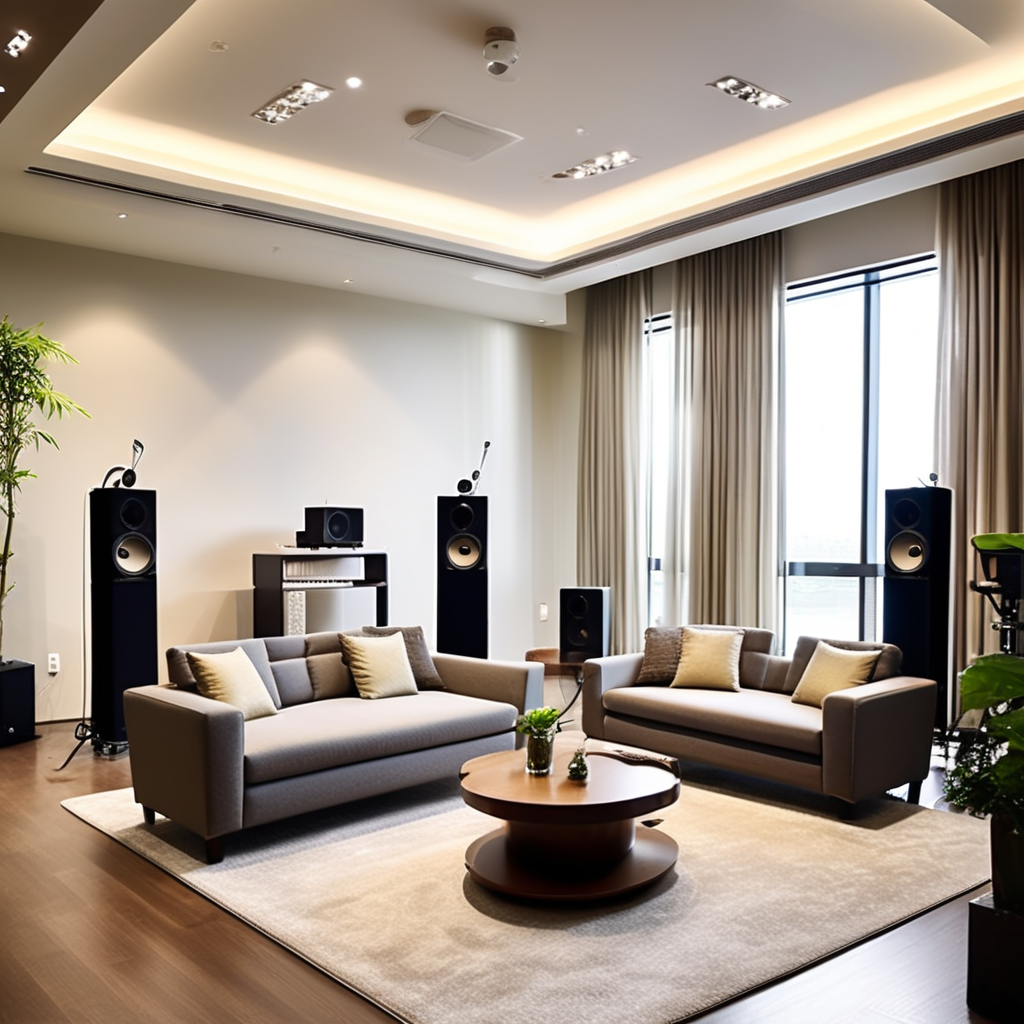
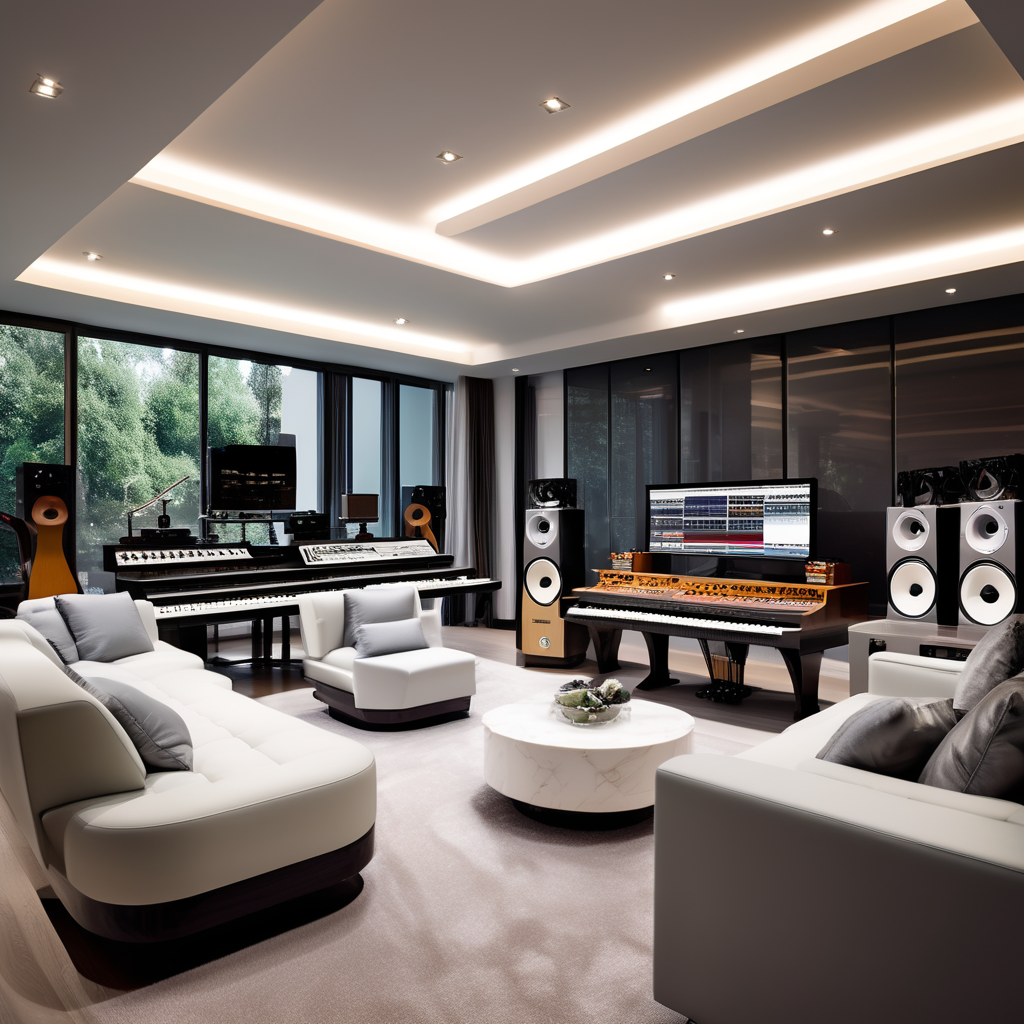
Acoustic treatment is vital in creating an optimal sound environment within your studio. Invest in high-quality soundproofing materials such as bass traps, diffusers, and acoustic panels to minimize unwanted echoes and outside noise interference.
Storage solutions are often overlooked but are essential for maintaining an organized workspace. Utilize shelves, cabinets, or wall-mounted racks to keep cables tidy and store equipment when not in use. This will help create a clutter-free environment conducive to creativity.
Remember comfort! Choose ergonomic furniture for those long recording sessions, such as chairs with proper back support. Incorporate cozy elements like rugs or cushions where you can relax during breaks or brainstorming sessions.
By carefully considering these aspects – layout, lighting, colors, acoustics, storage solutions, and comfort – you’ll be well on your way towards designing the ultimate music studio interior tailored specifically to suit your needs.
So, let’s dive into these design principles further and explore how they can transform your creative sanctuary into something truly extraordinary.
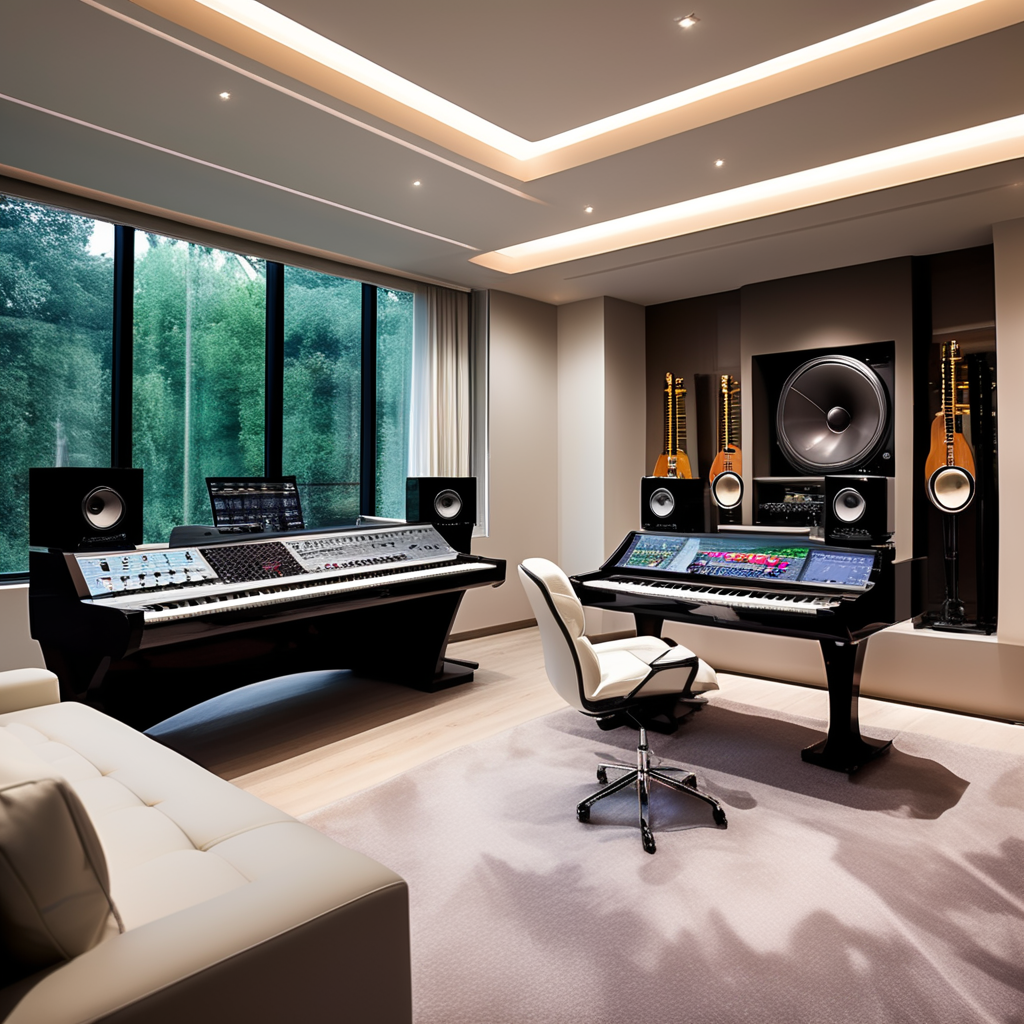
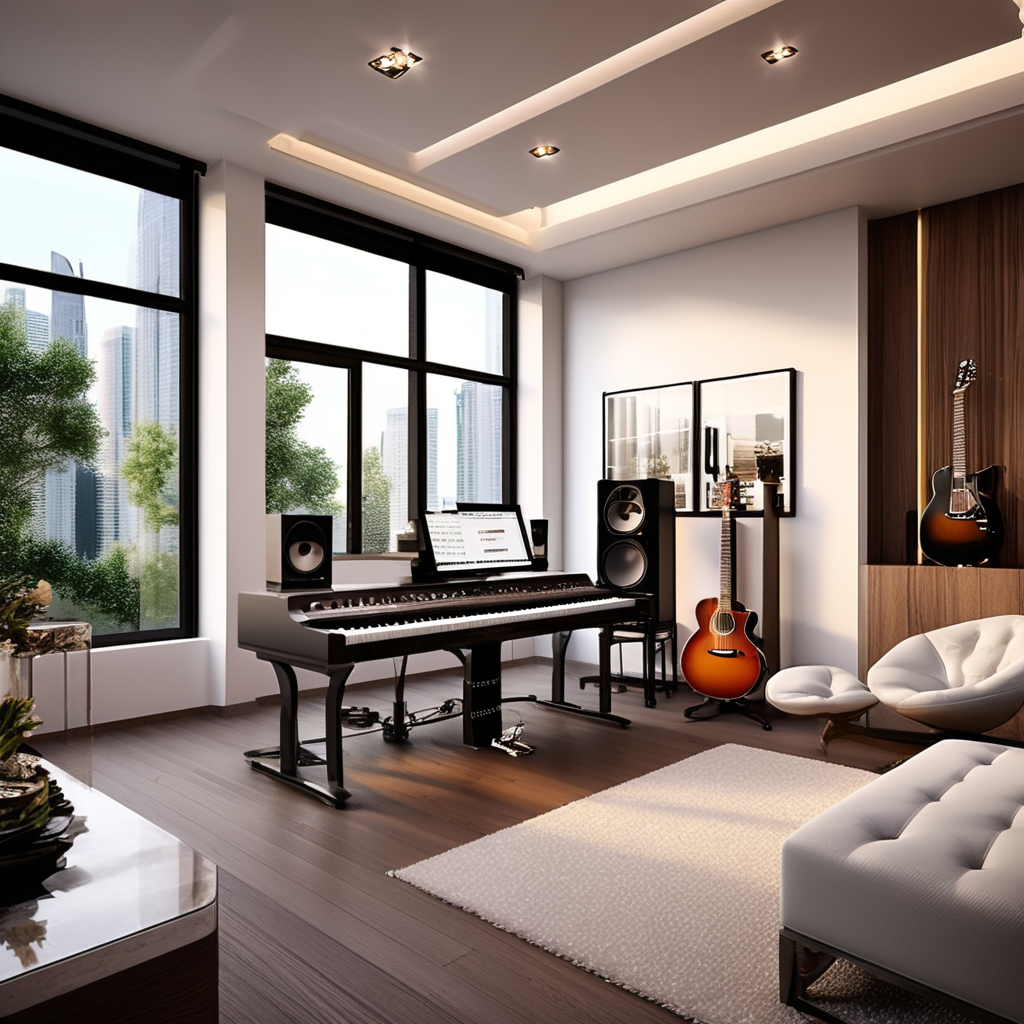
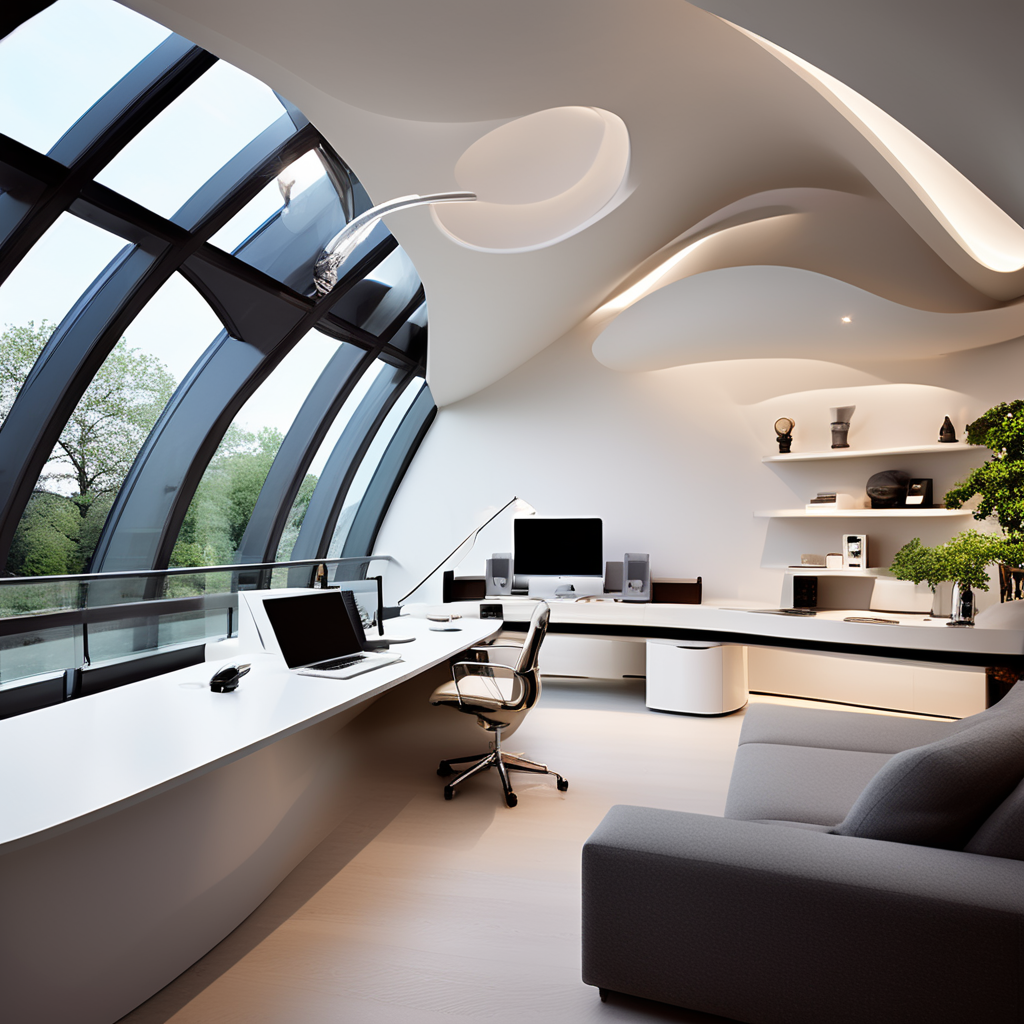
Critical Elements for Music Studio Design
When designing a music studio, several vital elements need to be considered to create the perfect environment for musicians and producers alike.
First and foremost, acoustics play a crucial role in any music studio design. The materials used for walls, floors, and ceilings should be carefully chosen to minimize sound reflections and ensure optimal quality. Soundproofing is also essential to prevent outside noises from interfering with recordings or mixing sessions.
Another important element is the layout of the space. The placement of equipment, instruments, and furniture should be carefully planned to maximize workflow and comfort. A well-designed studio will have designated areas for recording, mixing, mastering, and even a dedicated space for relaxation or inspiration.
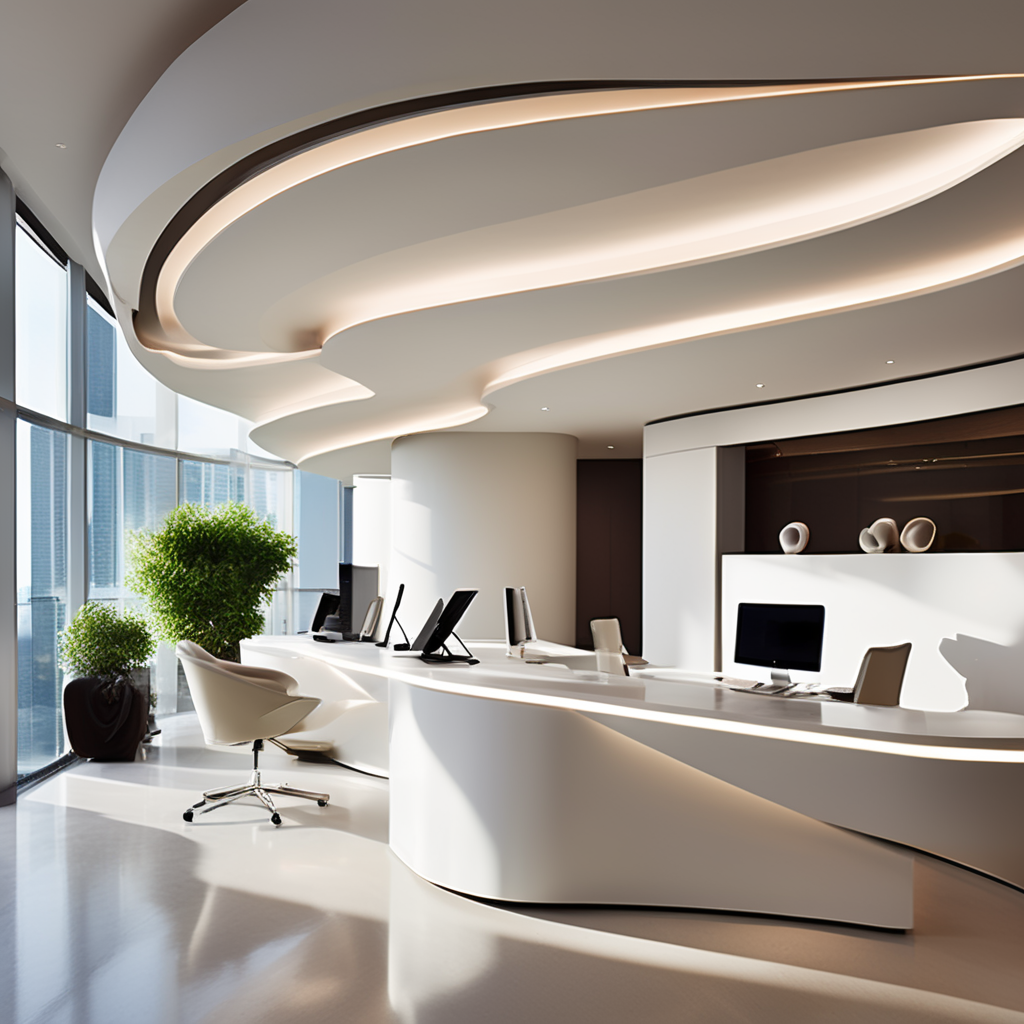
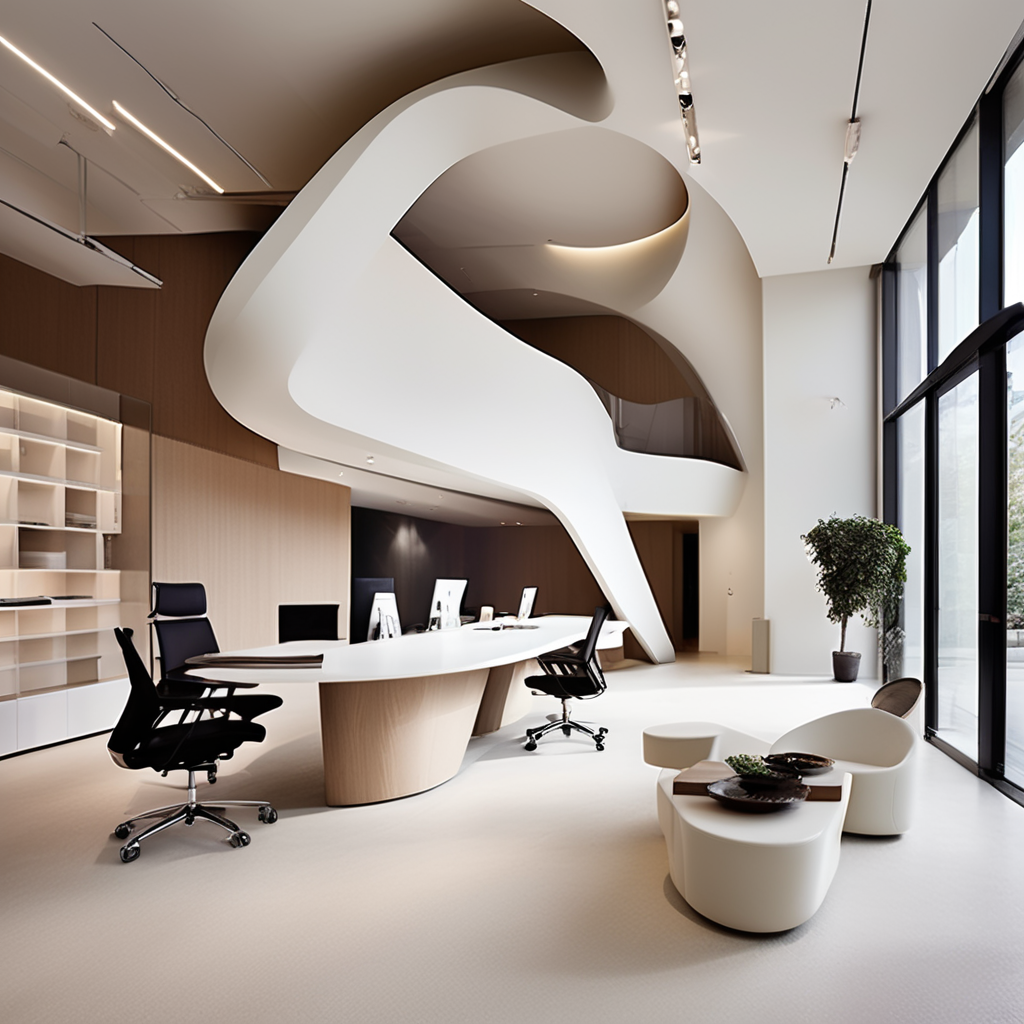
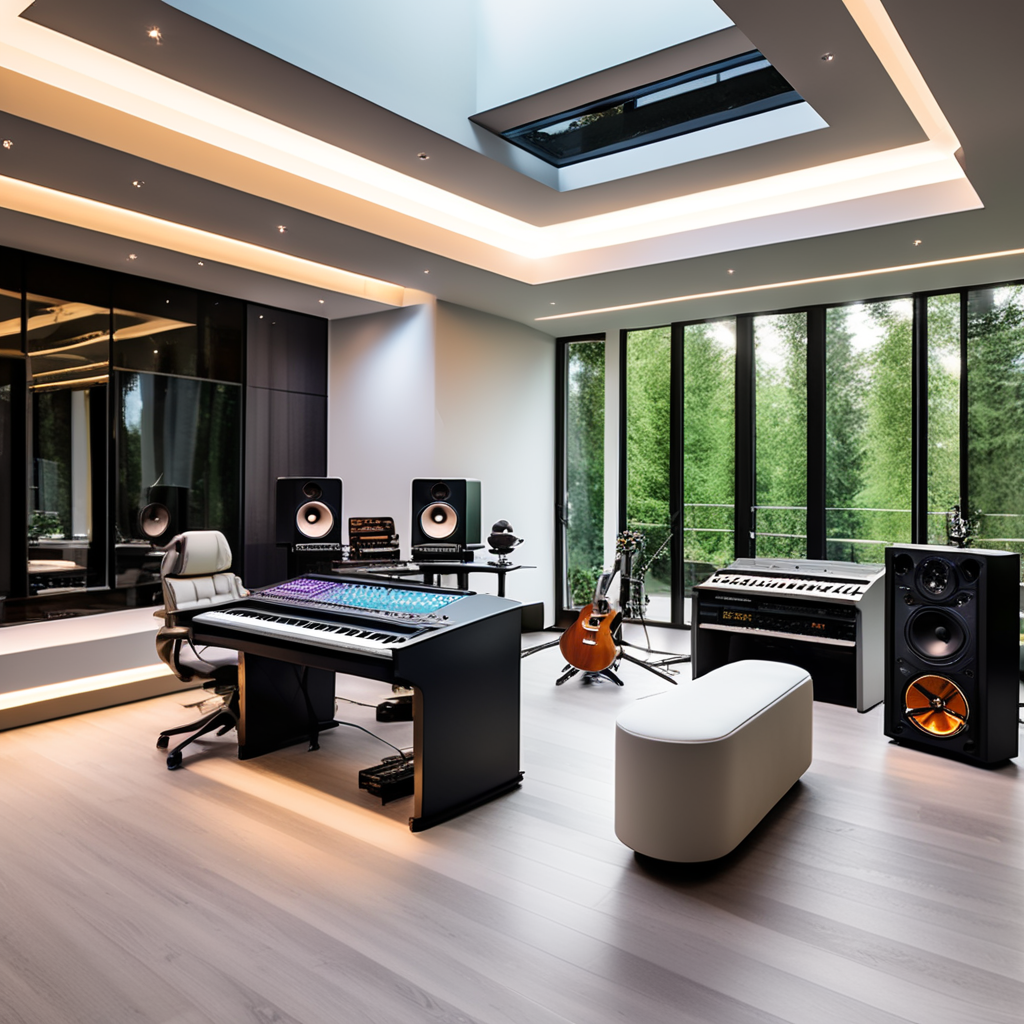
Lighting is often overlooked but can greatly impact the overall atmosphere of a music studio. Natural light is ideal whenever possible, creating a more inviting and inspiring environment. However, proper artificial lighting should also be installed to provide adequate illumination during late-night sessions.
Storage is another crucial element that should be considered. Music studios accumulate a lot of equipment over time – from microphones and instruments to cables and accessories – so having ample storage solutions is essential for keeping everything organized and easily accessible.
Aesthetics play an important role in creating a visually appealing music studio. While functionality should always precede design decisions, incorporating elements such as color schemes or artwork can help inspire creativity within the space.
By considering these key elements during your music studio design process, you’ll ensure that your space is functional and conducive to creativity and productivity.
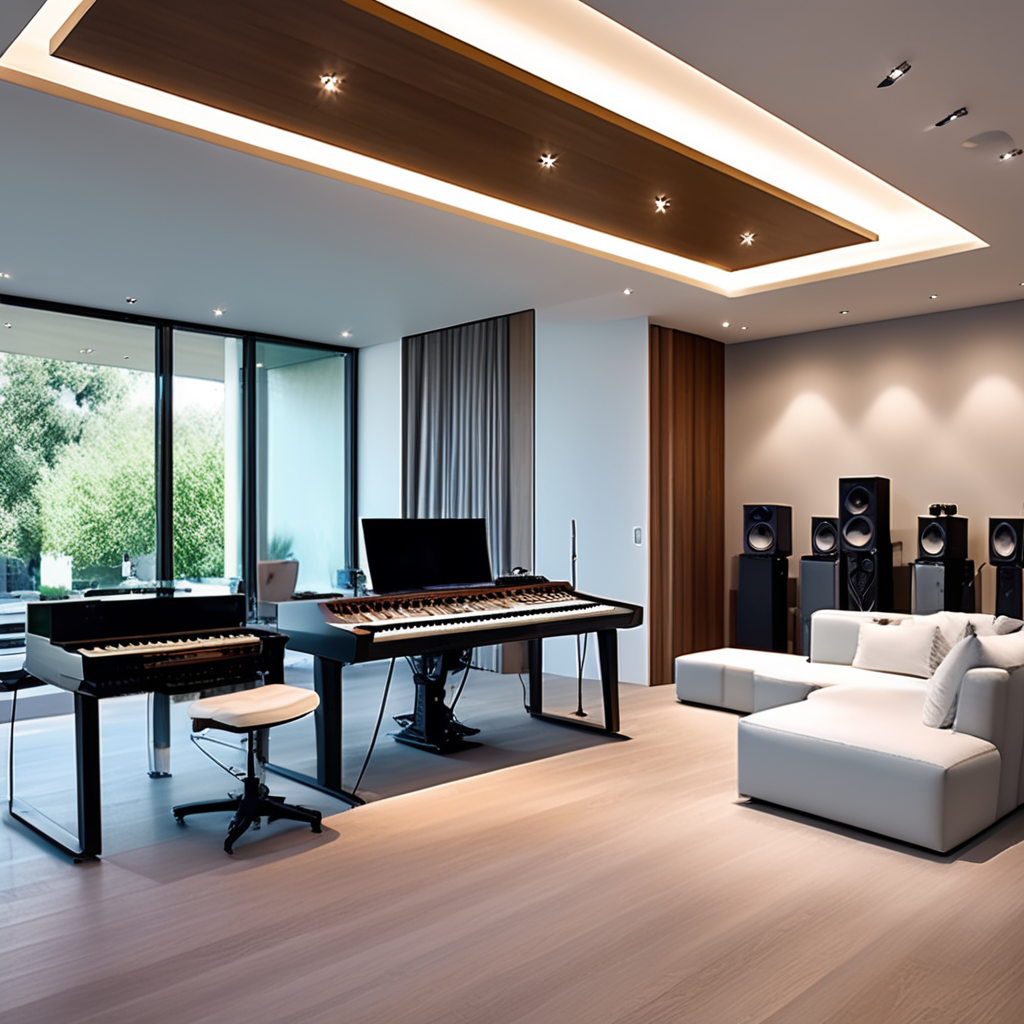
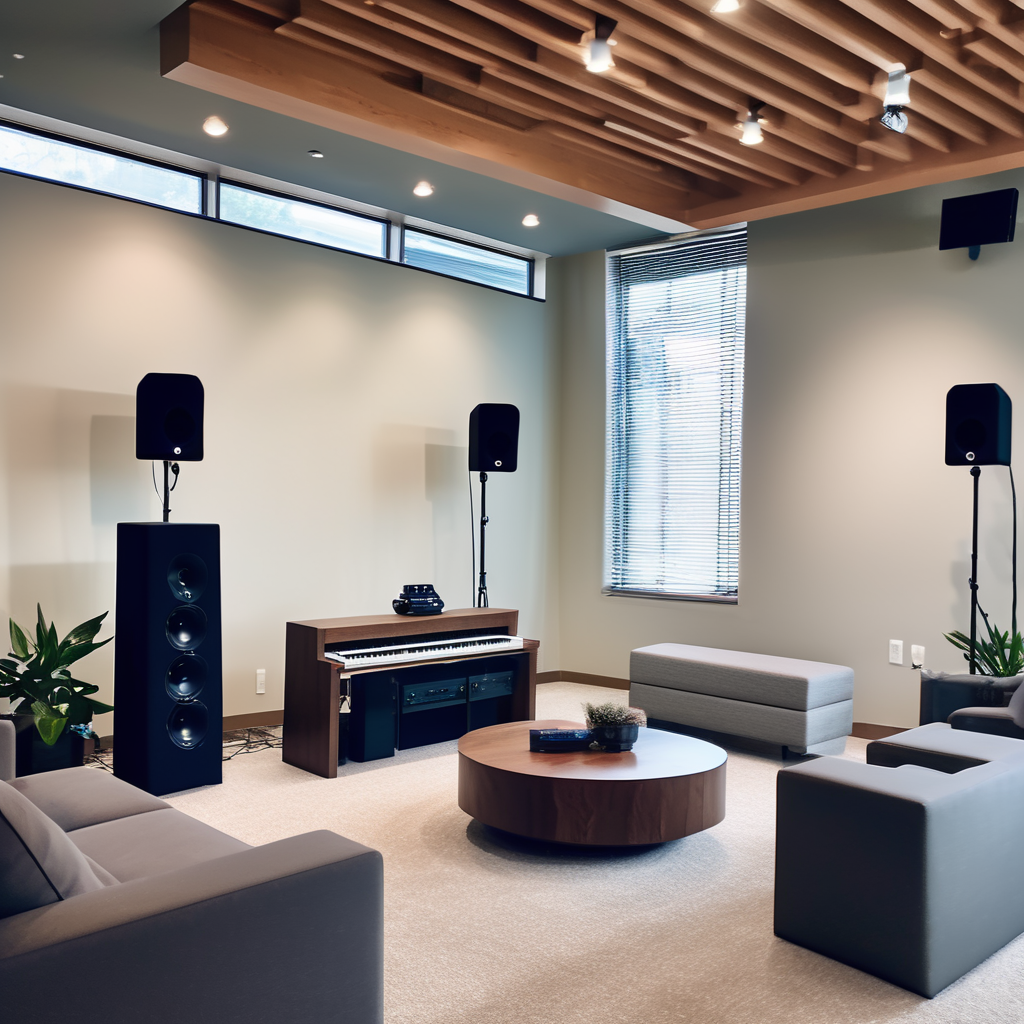
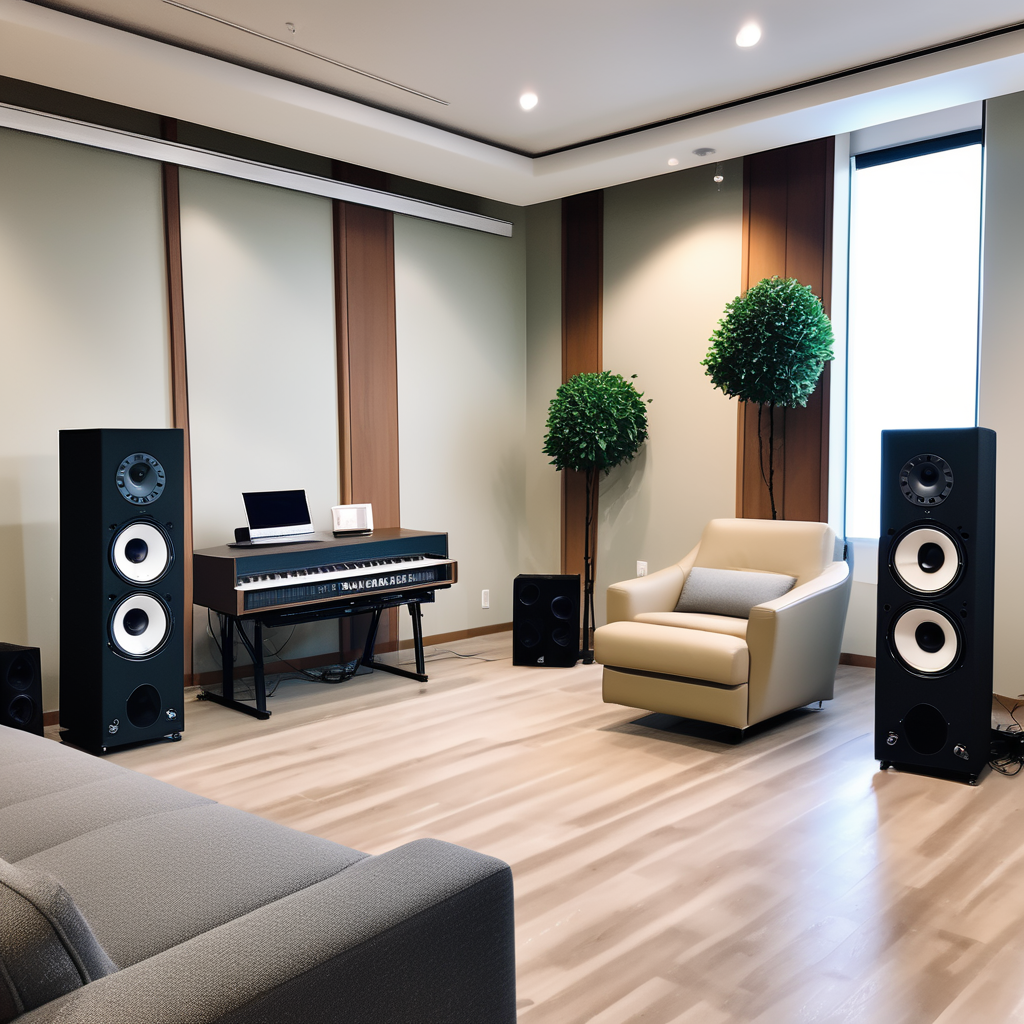
Creating the Perfect Sound Environment in Your Studio
One of the most important considerations when designing a music studio interior is creating the perfect sound environment. After all, musicians and producers rely on their ears to capture and create amazing music. Here are some key factors to consider when aiming for optimal sound quality in your studio.
Acoustic treatment is crucial in controlling sound reflections and reverberations within the space. This can be achieved through various methods such as strategically installing diffusers, absorbers, or bass traps throughout the room.
Another essential aspect is proper speaker placement. It’s vital to position your monitors correctly so that they provide an accurate representation of your mix. Placing them at ear level and away from walls or corners will minimize unwanted resonances and improve clarity.
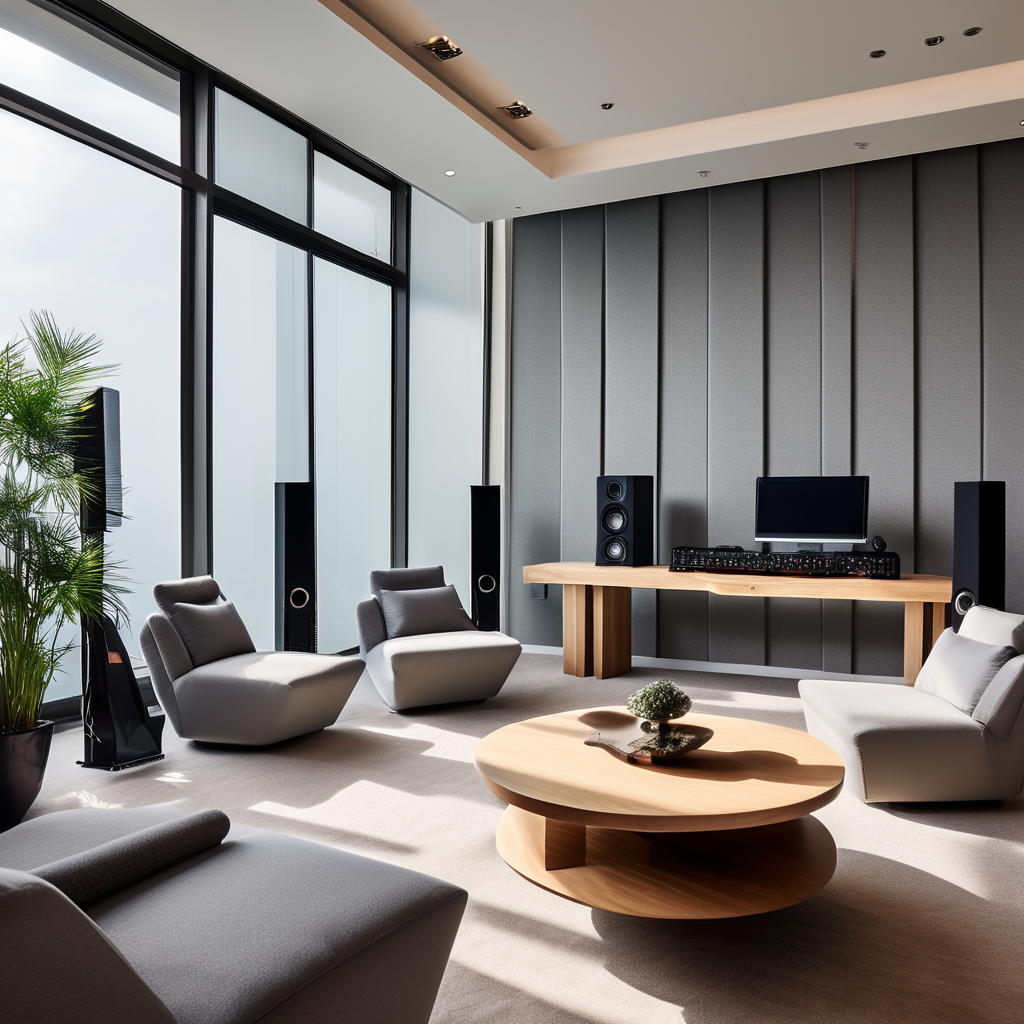
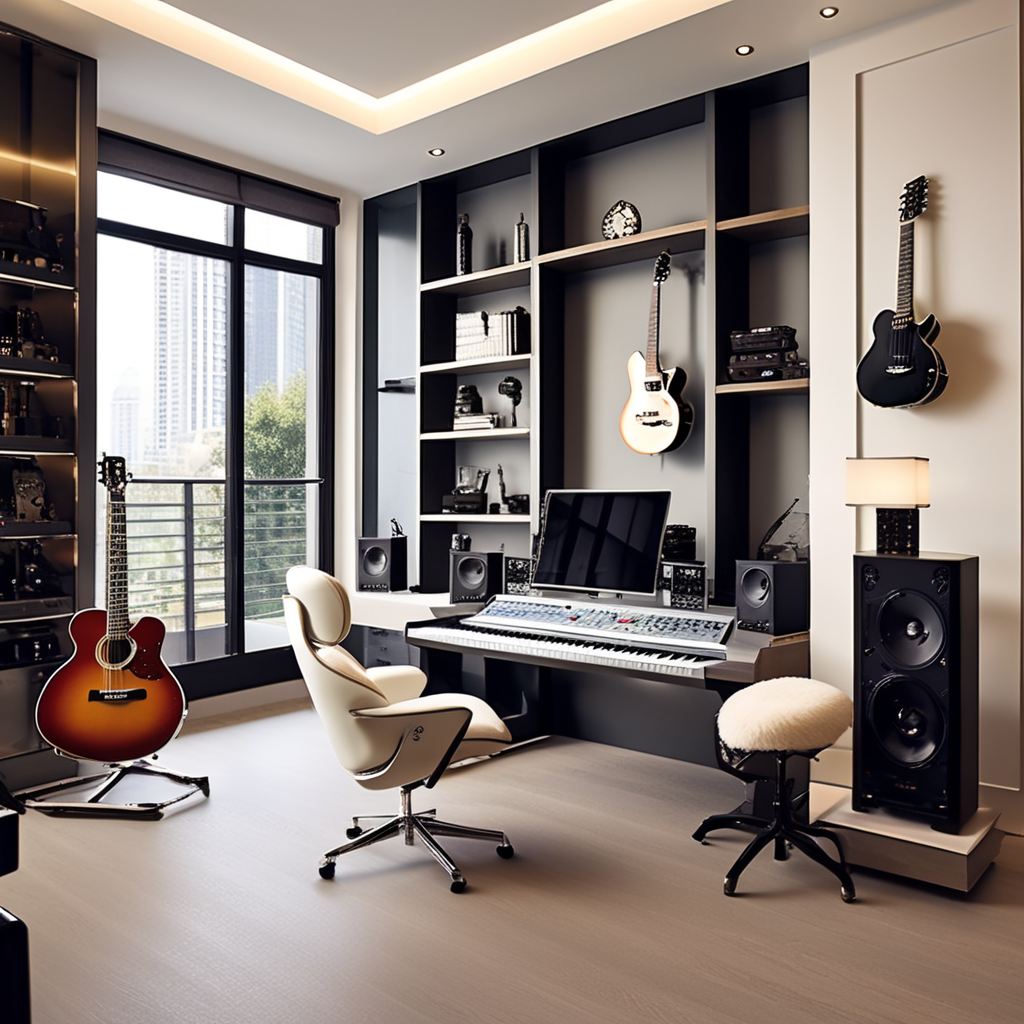
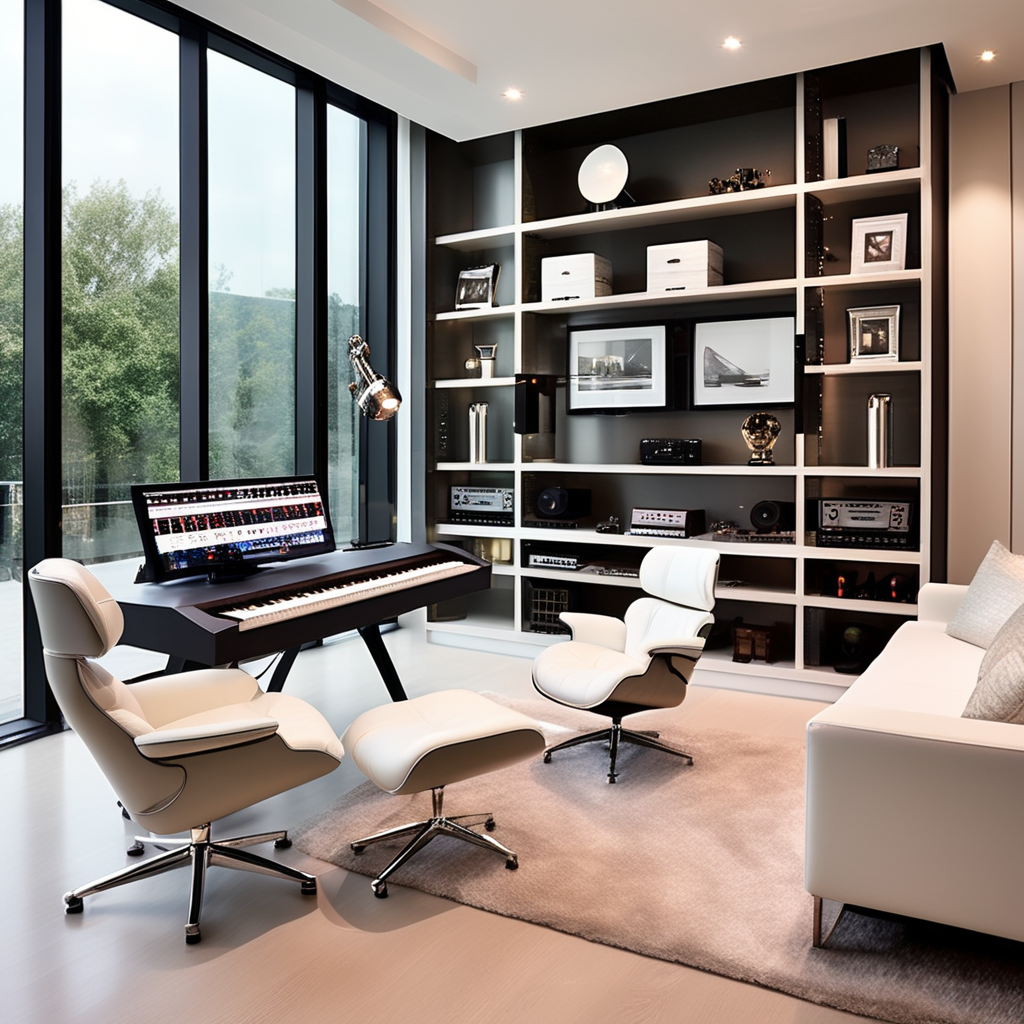
Furthermore, noise isolation is crucial for recording studios where external sounds can interfere with recordings. Insulating walls and floors with foam or heavy curtains can help reduce external noise pollution.
Additionally, choosing high-quality equipment such as microphones and headphones is essential for capturing pristine audio. Investing in reliable gear ensures better recording quality and enhances the overall listening experience during the production stages.
Paying attention to room dimensions is important for achieving balanced acoustics. Avoiding square-shaped rooms minimizes standing waves, while adding diffusion panels can scatter sound reflections uniformly across the space.
By considering these steps when designing your music studio interior, you’ll be well on your way to creating a perfect sound environment that allows you to produce exceptional music with precision and accuracy.
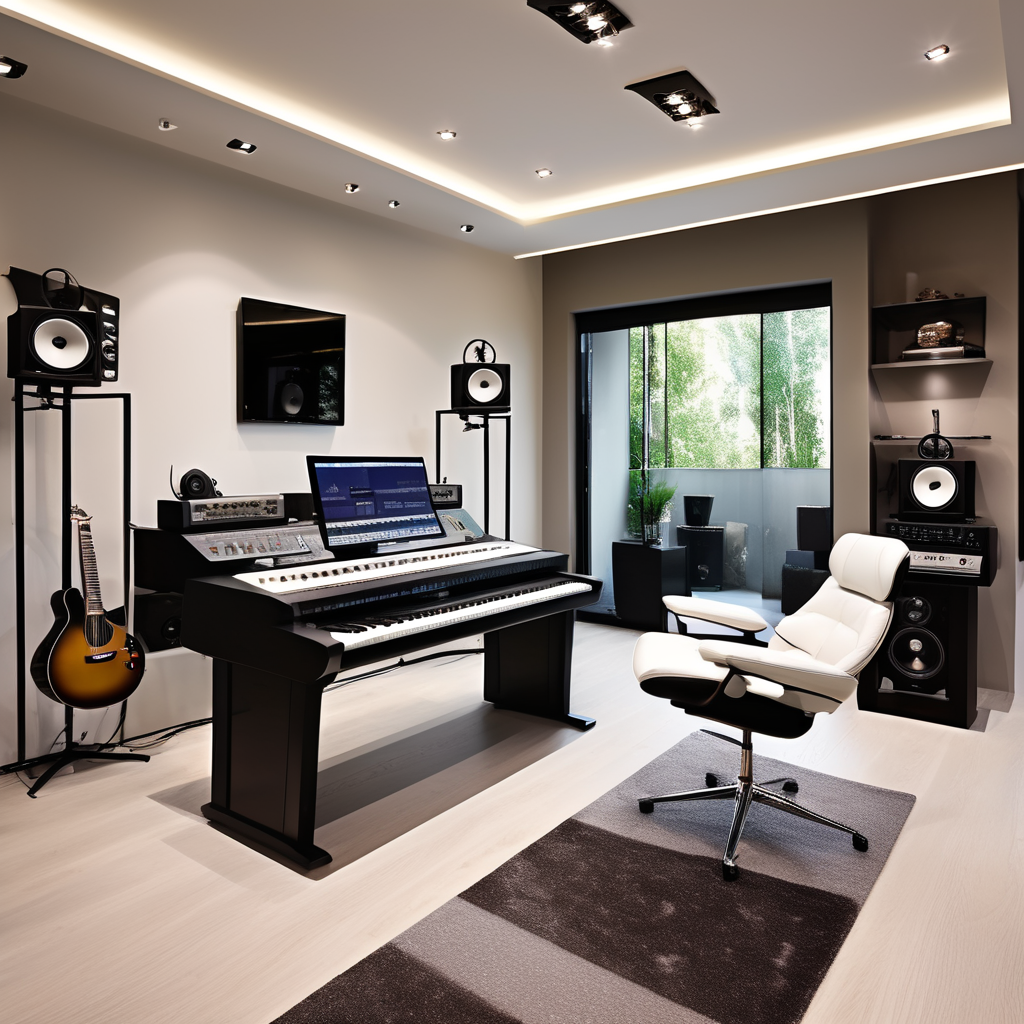
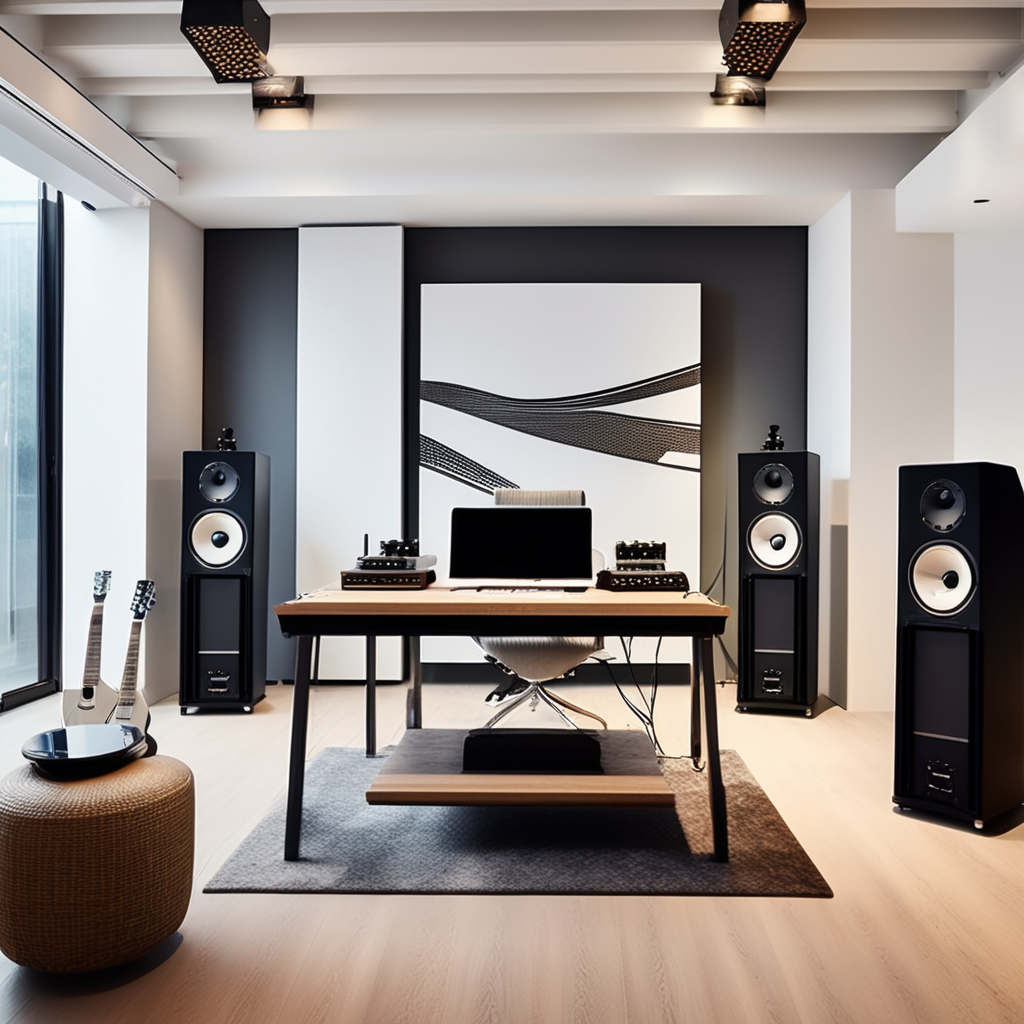
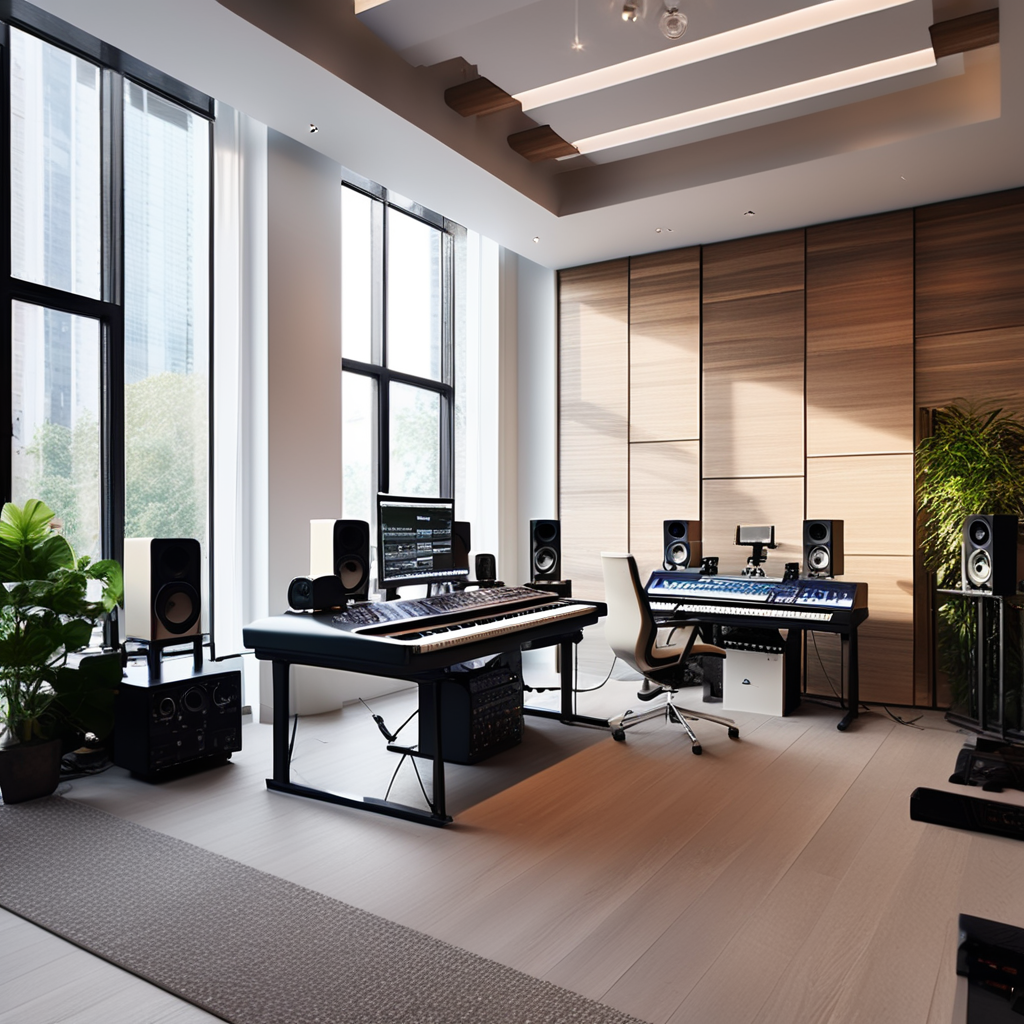
Design Principles for Music Production Spaces
Creating a compelling and inspiring music production space requires careful consideration of design principles. These principles can help optimize your studio’s functionality, workflow, and overall vibe. Here are some fundamental design principles to consider when designing your music production space.
Consider the layout of your studio. An efficient layout can enhance productivity and creativity. Positioning your gear strategically allows for easy access during recording or mixing sessions. A well-designed control room should provide clear sightlines to all equipment and monitors.
Acoustics plays a crucial role in any music production space. Achieving balanced sound is essential for accurate monitoring and mixing. Consider using acoustic treatments such as diffusers, absorbers, and bass traps to minimize reflections and standing waves.
The choice of materials used in construction can also impact the acoustics of a studio environment. Opt for materials that have good sound absorption properties to reduce unwanted reverberation or echo effects.
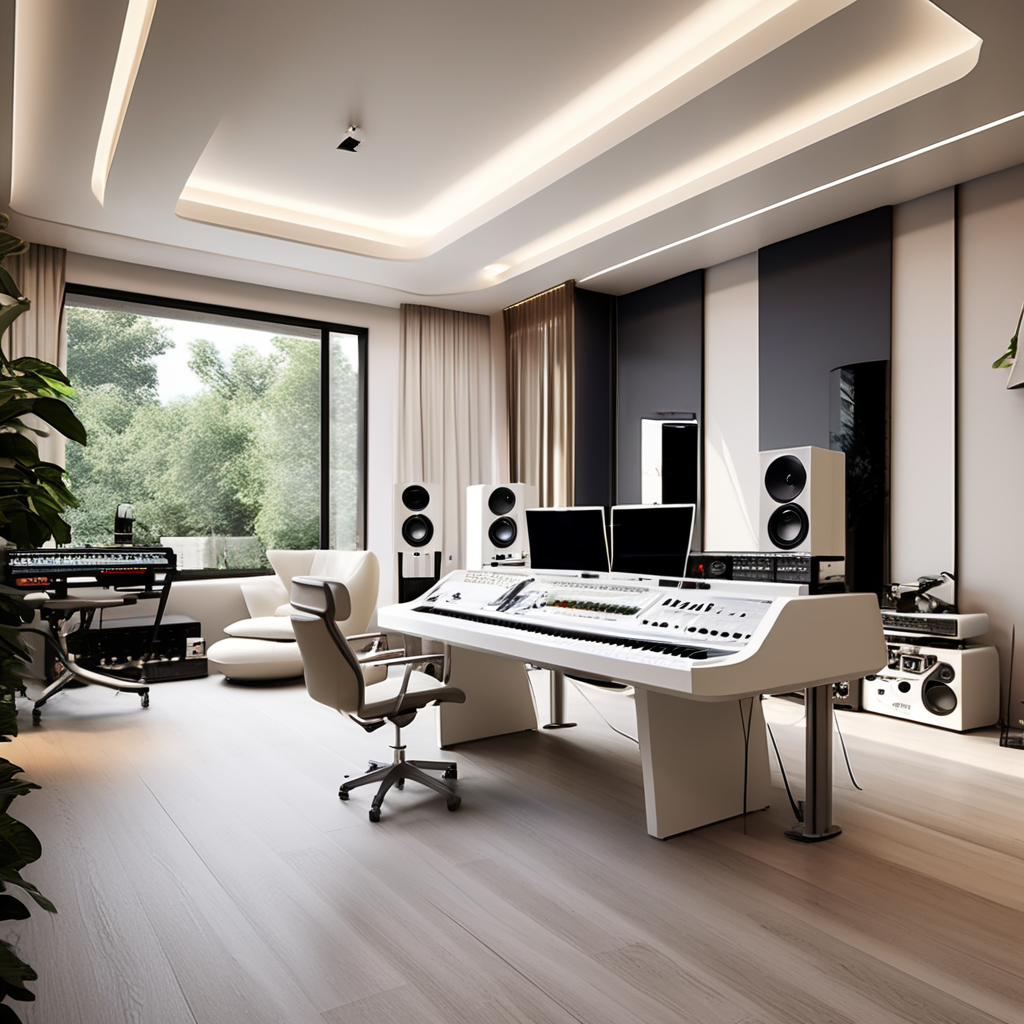

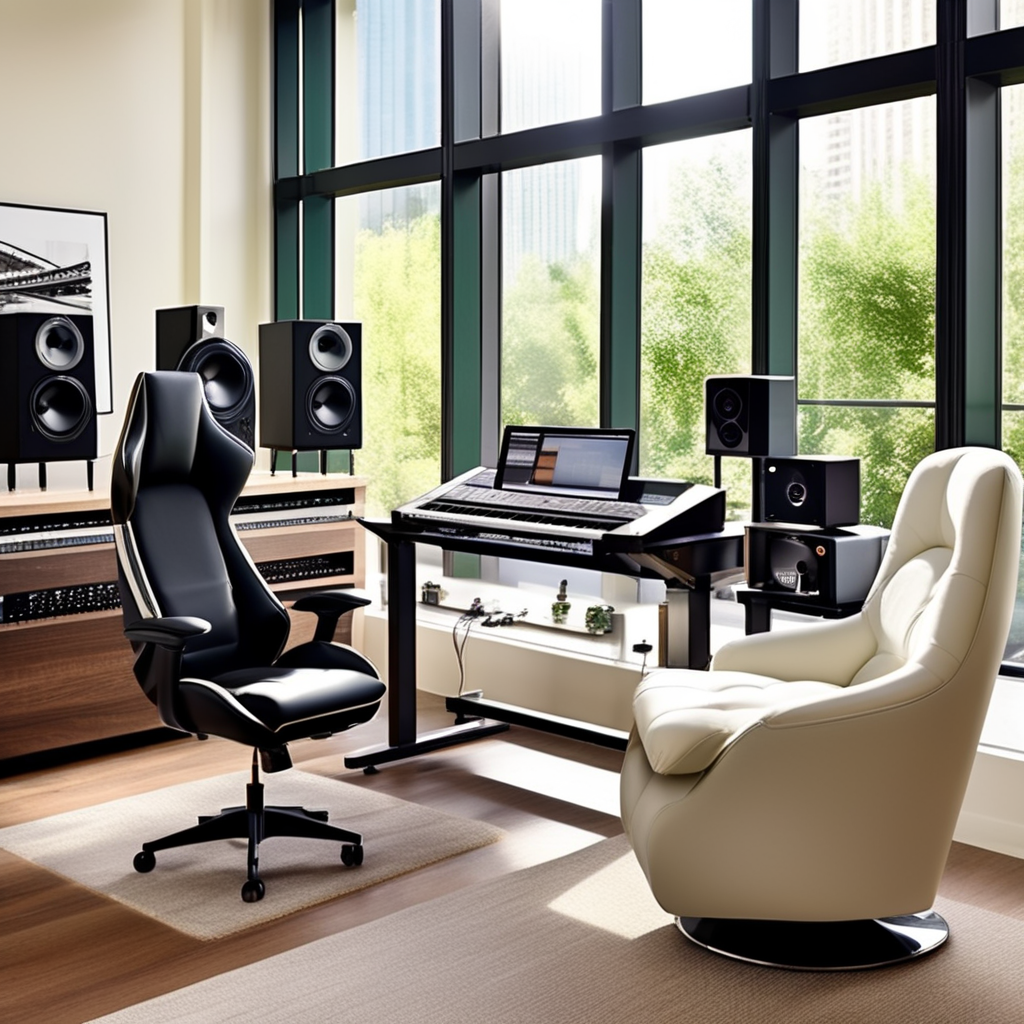
In addition to acoustics, lighting is another crucial aspect when designing a music production space. Natural light can create a pleasant atmosphere, but it’s essential to control it with curtains or blinds when needed. Additionally, adjustable artificial lighting can help create different moods depending on the task.
Ergonomics should be noticed too – ensuring that workstations are comfortable will contribute significantly towards productivity levels during long hours spent in the studio working on projects.
Incorporating personal touches into your design will make your studio feel unique and reflect your creative style. Whether it’s artwork on the walls or custom furniture pieces, these elements add character while maintaining functionality within the space.
By considering these design principles when setting up your music production space, you’ll be well on your way to creating an environment that fosters creativity and enhances productivity throughout every step of the music-making process.
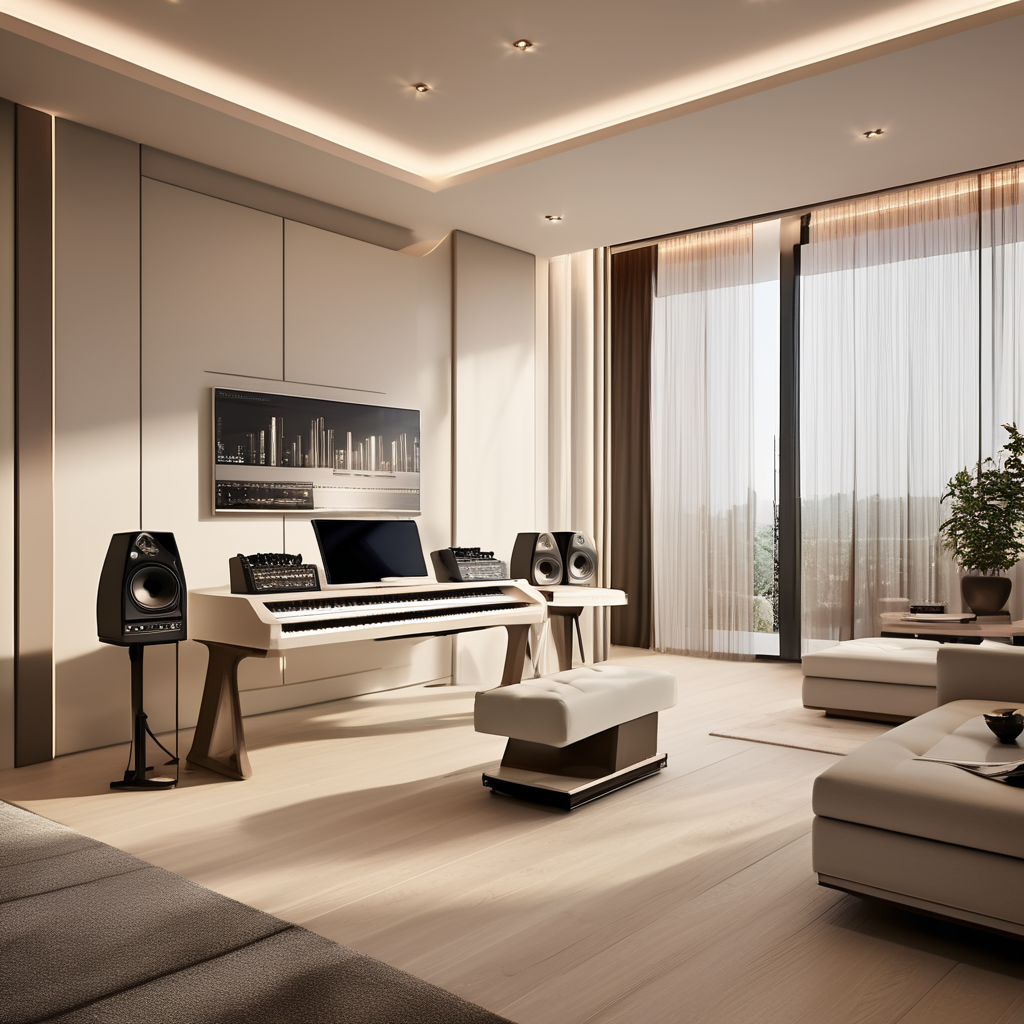
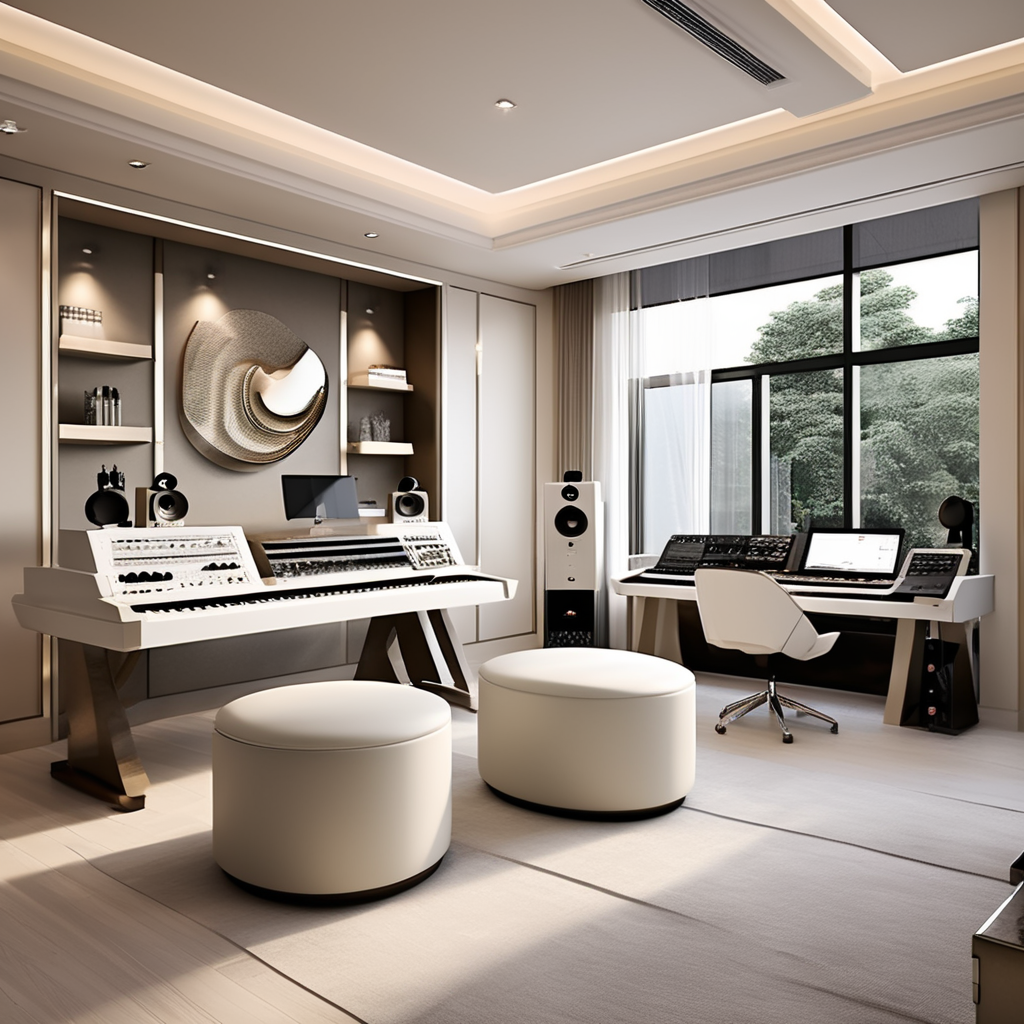
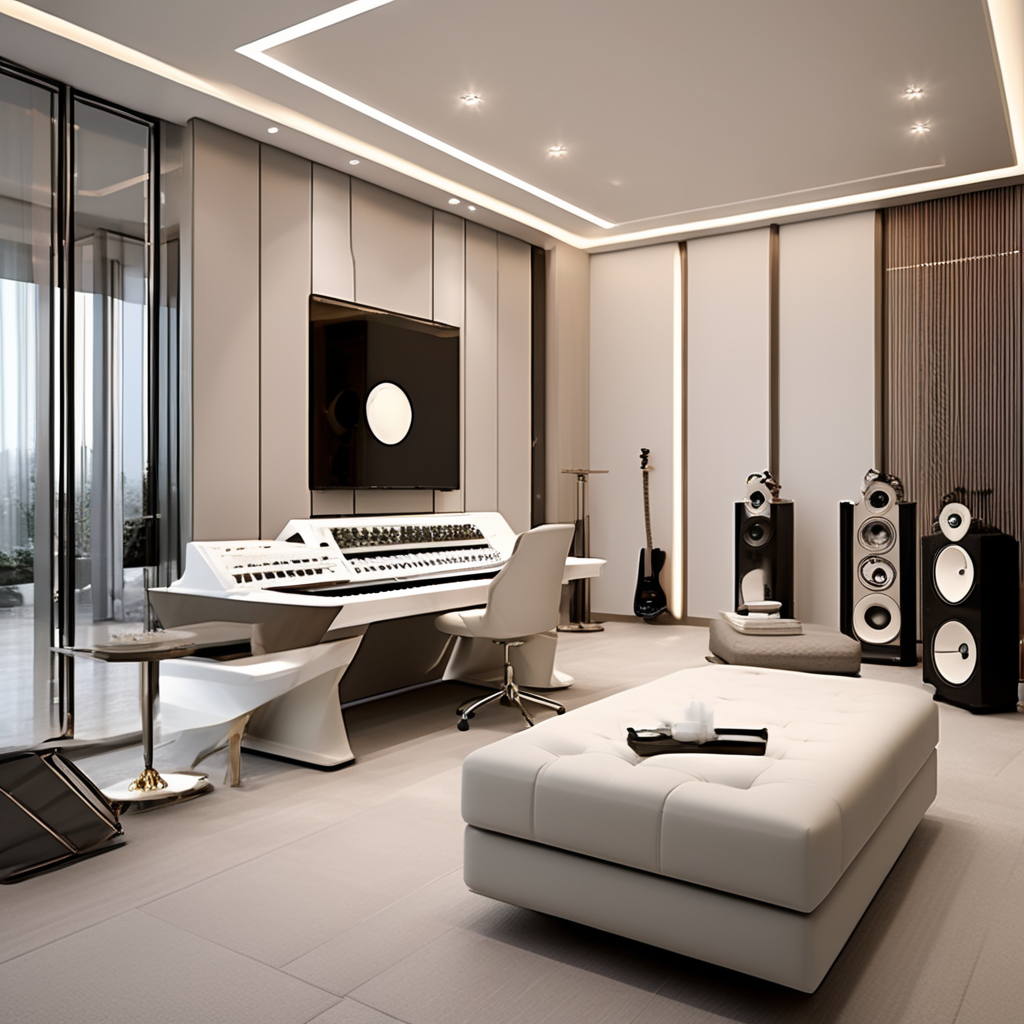
Innovative Ideas for Music Studio Interiors
Creativity should extend beyond the melodies and lyrics when designing a music studio. The interior of your space plays a crucial role in creating an inspiring and productive environment for musicians. Here are some innovative ideas to consider when crafting your music studio’s interior design.
Consider incorporating modular furniture that can be easily rearranged or customized based on your needs. This allows you to adapt the layout of your studio as required, whether you’re recording solo or collaborating with a band.
Additionally, consider implementing soundproofing techniques that reduce outside noise and enhance the room’s acoustics. Installing acoustic panels or diffusers can help achieve optimal sound quality while maintaining visual appeal.
To add a touch of inspiration, you could create a focal point in your studio by showcasing musical instruments as decorative elements. Hang guitars on walls or display keyboards on shelves for aesthetic appeal and quick access during creative sessions.

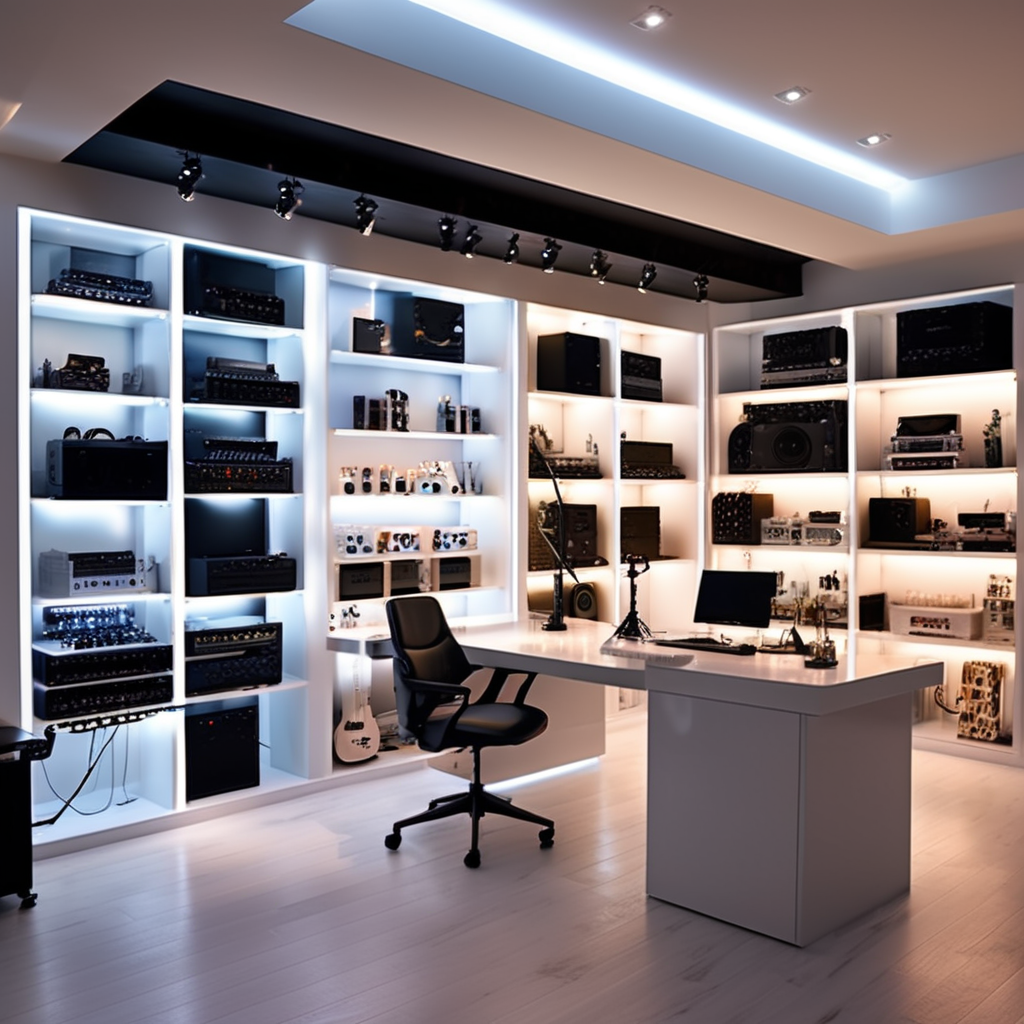
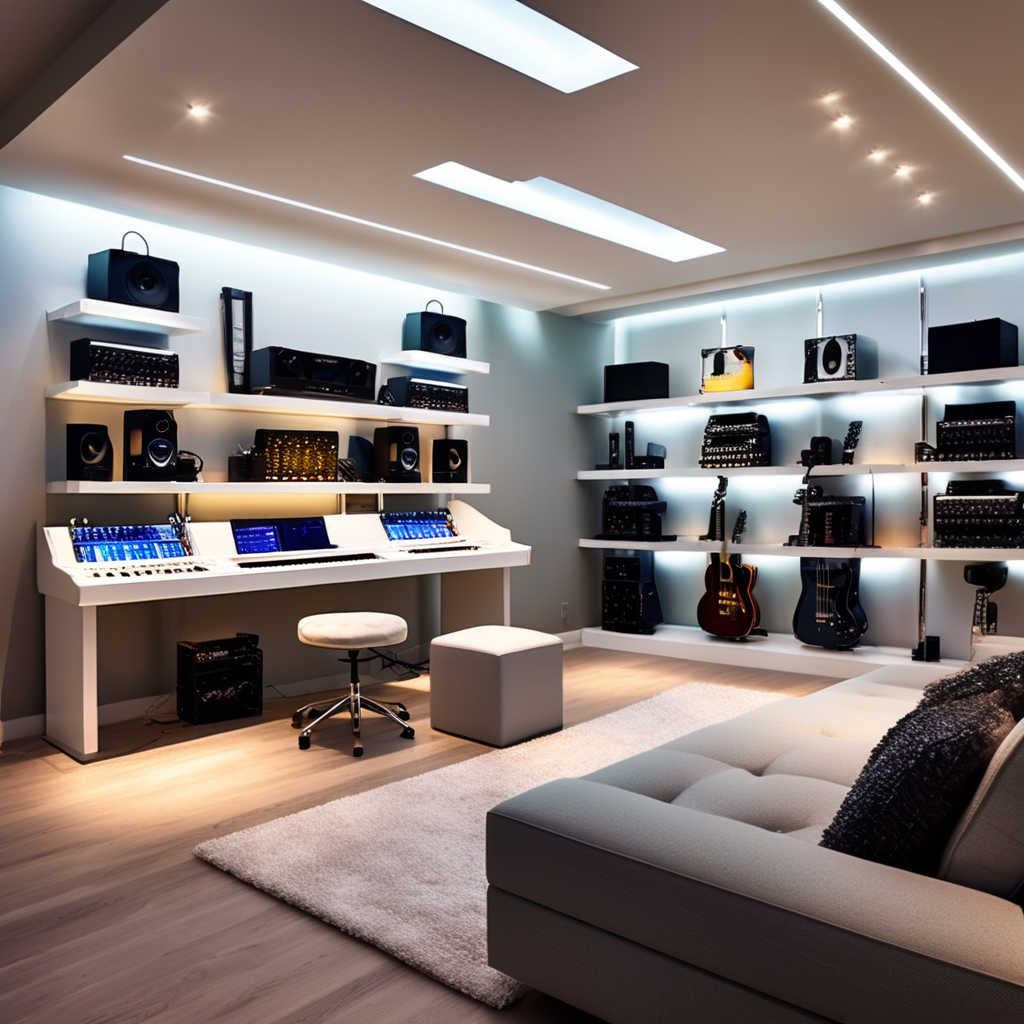
Another idea is to incorporate personalized lighting options into your music studio design. Experiment with different ambient lighting setups that can enhance mood and stimulate creativity during late-night sessions or early-morning jams.
Remember storage! Utilize clever storage solutions such as wall-mounted racks or cabinets designed specifically for musical equipment. This keeps things organized and maximizes floor space in smaller studios.
Consider adding comfortable seating areas where musicians can relax between takes or during breaks. Cozy couches or bean bags create an inviting atmosphere conducive to collaboration and brainstorming sessions.
Remember, innovation knows no bounds when it comes to designing music studios! Let your imagination run wild as you blend functionality with artistic expression to create a unique space tailored to your style and needs.
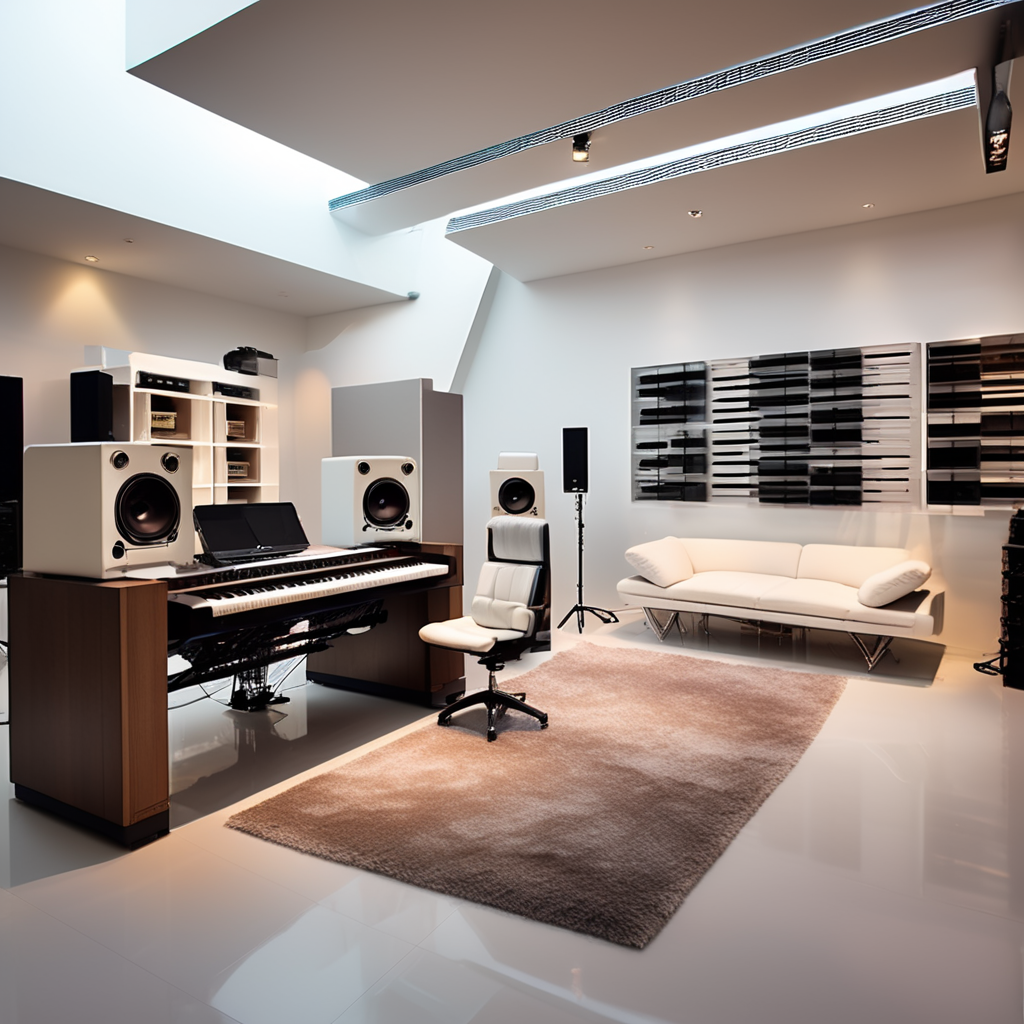
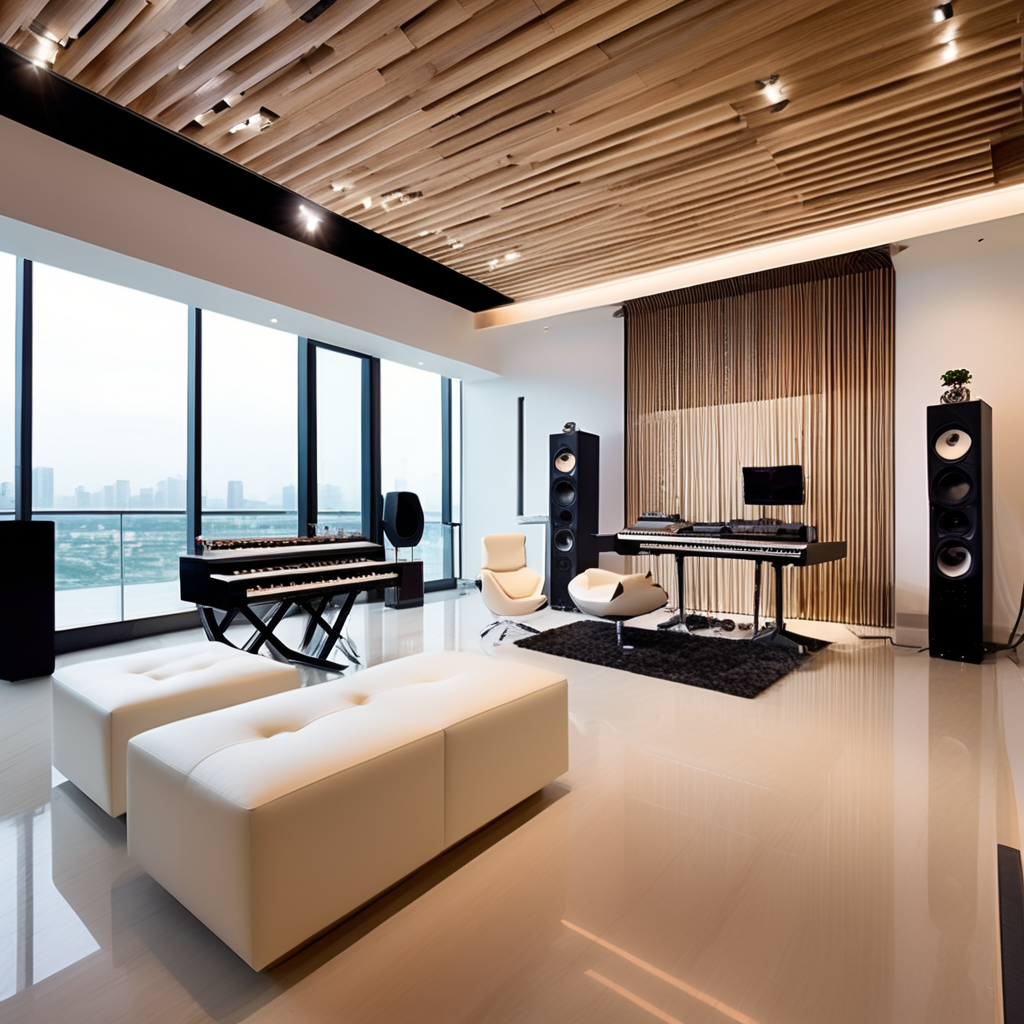
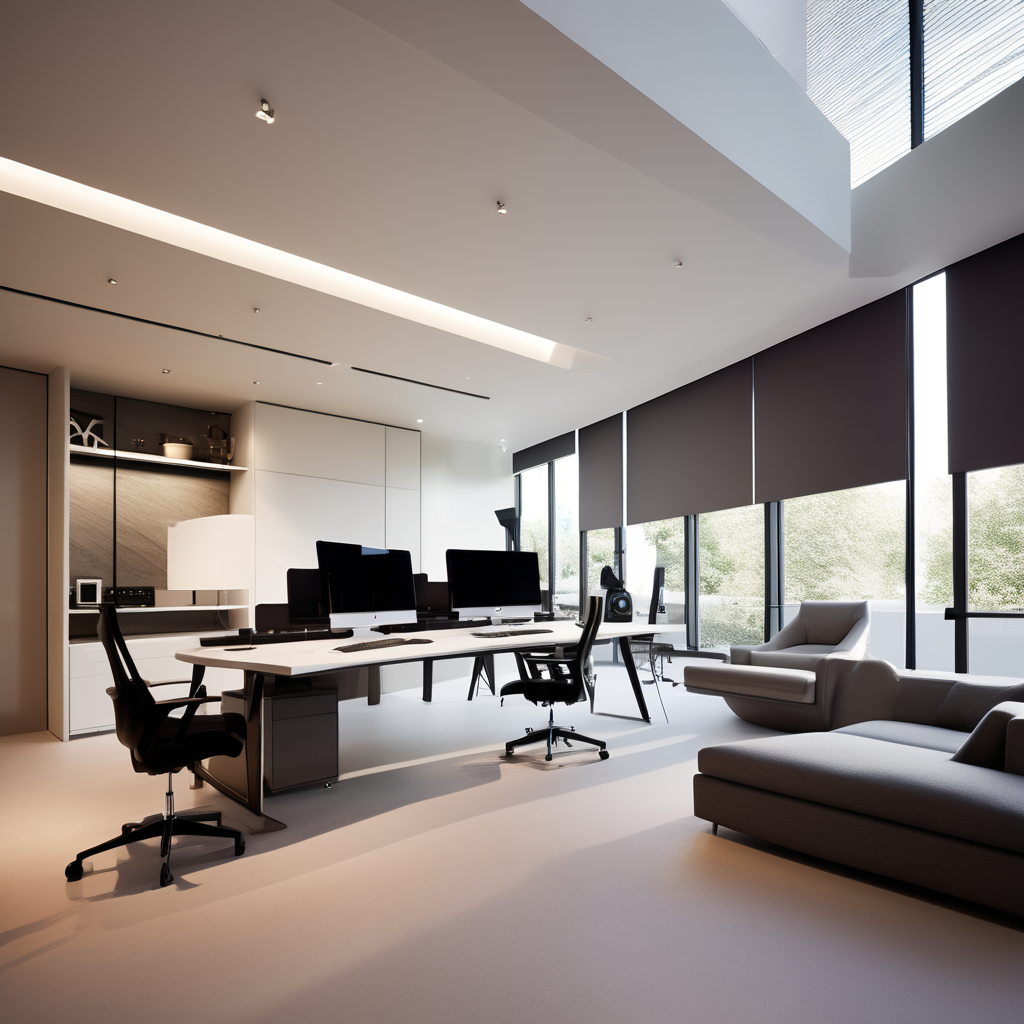
Balancing Aesthetics in Your Music Studio Design
Finding the perfect balance between aesthetics and functionality is crucial when designing your music studio. You want a space that inspires creativity and reflects your style and taste.
One way to achieve this balance is by carefully selecting the color scheme for your studio. Consider using calming and neutral tones as the base, such as shades of gray or beige, which can create a soothing atmosphere conducive to focused work. Then, add pops of color through accents like artwork or furniture to inject personality into the space.
Lighting is another vital aspect of creating an aesthetically pleasing environment in your music studio. Natural light can be incredibly beneficial for both productivity and mood, so try to maximize the amount of natural light coming into your space. Additionally, consider incorporating adjustable lighting options, such as dimmer switches or LED strips, which allow you to control the ambiance based on different tasks or moods.
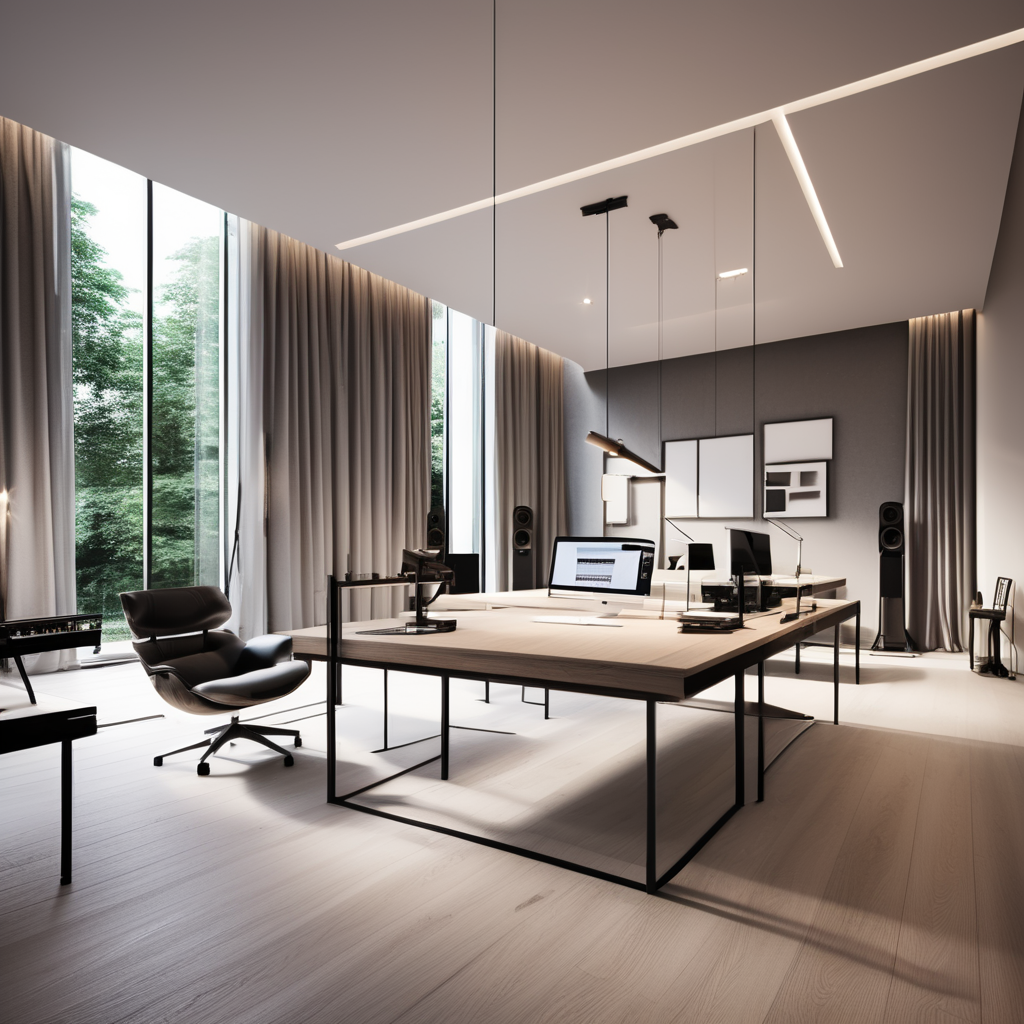
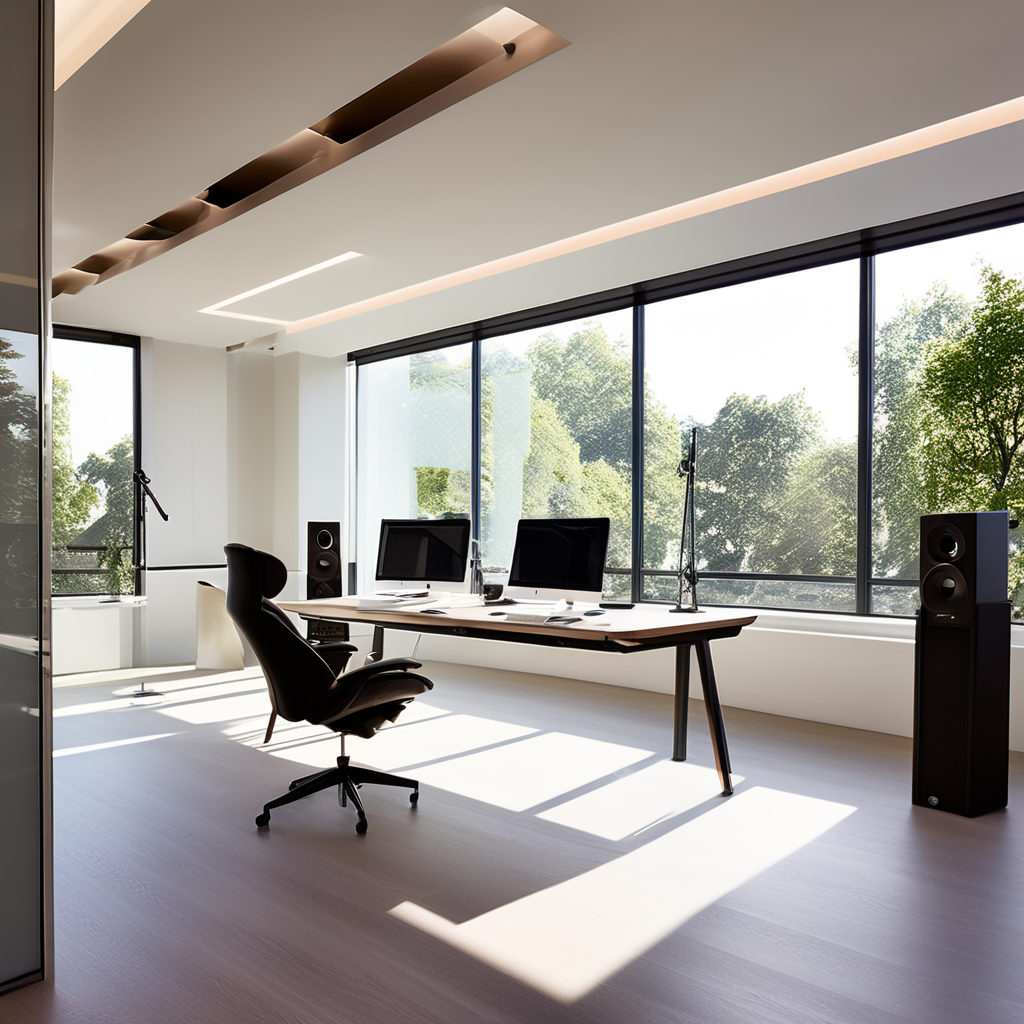
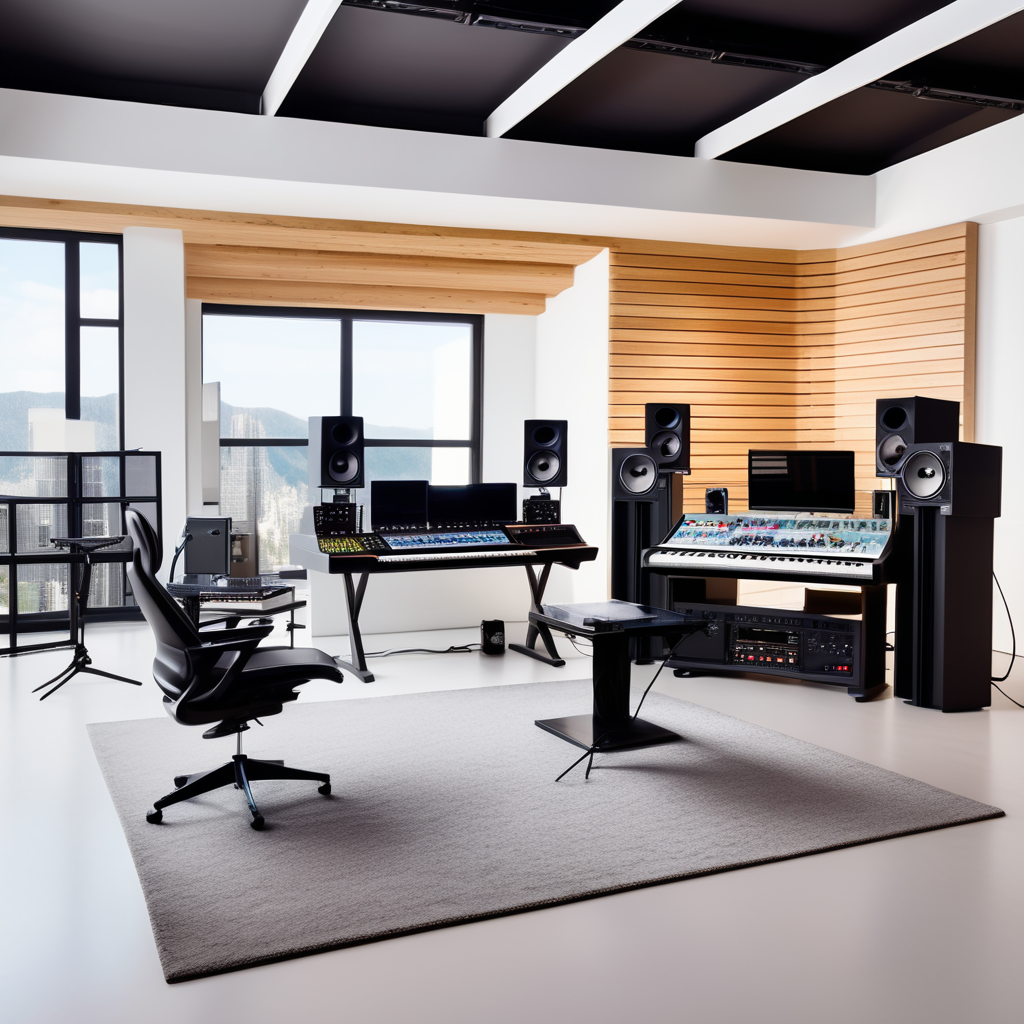
Furniture selection plays a significant role in balancing aesthetics with functionality in your music studio design. Look for pieces that are not only visually appealing but also comfortable and practical for long hours spent working in the studio. Invest in ergonomic chairs that provide proper support and adjustable workstations that cater to individual preferences.
To further enhance the aesthetic appeal of your music studio, remember acoustics. Opt for materials like acoustic panels or sound-absorbing curtains that improve sound quality and add texture and visual interest to the space.
Remember that personal touches can make a difference in achieving a balanced aesthetic in your music studio design. Display items like vintage instruments or album covers on shelves or walls as decorative elements that showcase your passion for music and unique style.
By carefully considering these factors – color scheme, lighting choices, furniture selection, acoustics management, and personal touches – you can strike a harmonious balance between aesthetics and functionality while crafting an inviting music studio interior design tailored to you.
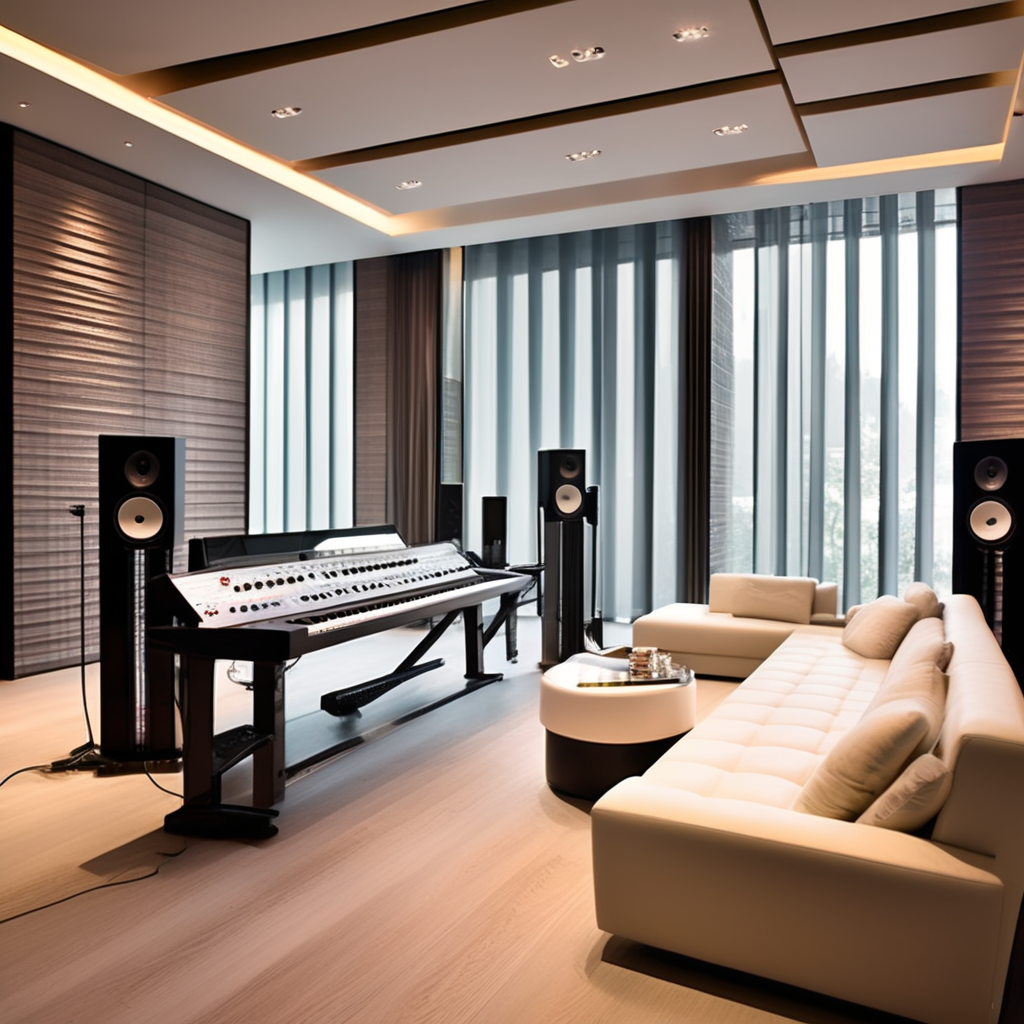
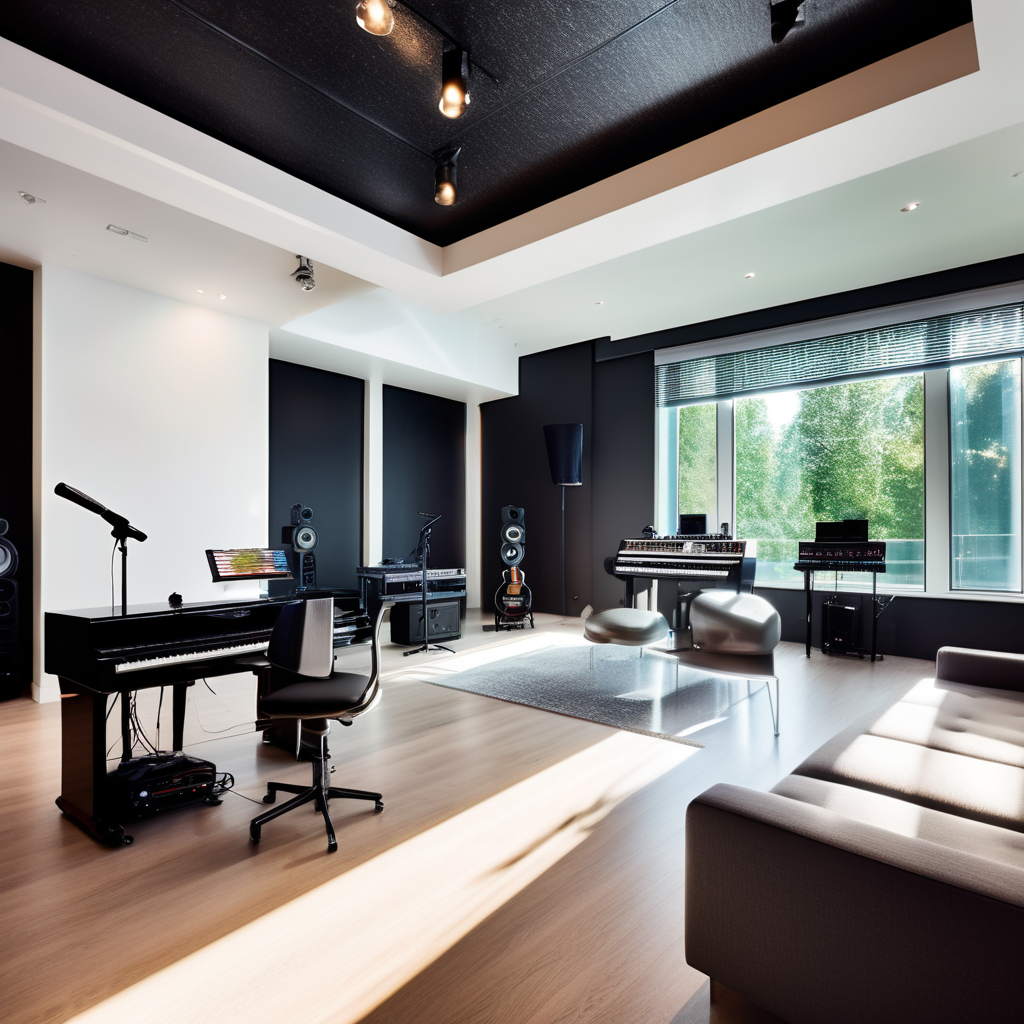
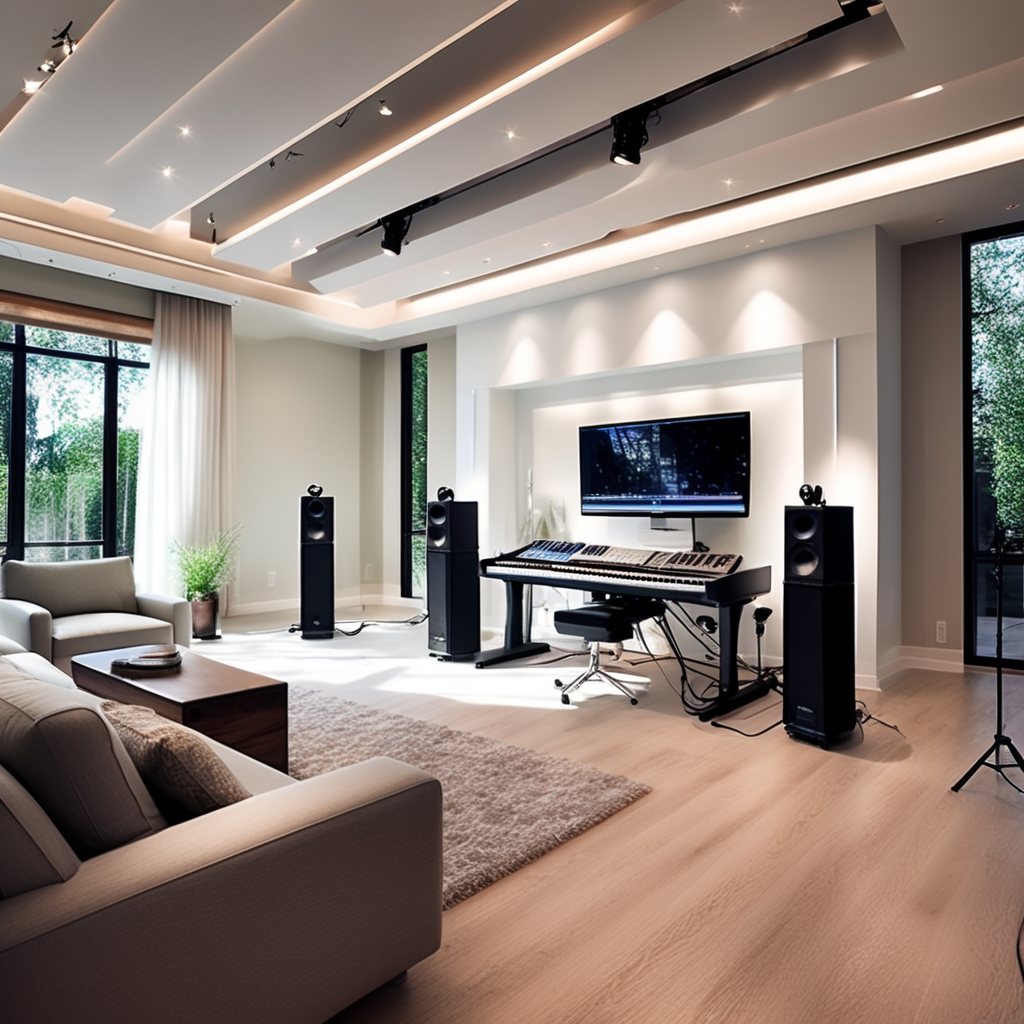
Practical Tips for Music Studio Interiors
When designing your music studio, some practical tips can help you create a space that is aesthetically pleasing, functional, and conducive to creativity. Here are a few ideas to consider:
1. Optimize the acoustics: Sound quality is one of the most important aspects of any music studio. Invest in acoustic treatments such as diffusers, absorbers, and bass traps to minimize unwanted reflections and echoes.
2. Choose the right furniture: Select ergonomic chairs and desks that provide comfort during long hours of recording or mixing sessions. Consider adjustable height options for flexibility.
3. Organize your cables: Keep your studio neat using cable management solutions like cable trays or velcro straps to prevent tangled cords from interfering with your workflow.
4. Utilize storage efficiently: Maximize your space by incorporating shelves, cabinets, or wall-mounted racks for storing instruments, equipment, and accessories.
5. Lighting matters: Install proper lighting sources strategically to ensure optimal visibility without casting shadows on work surfaces or causing eye strain.
6. Control temperature and humidity: Maintain an environment conducive to equipment longevity by investing in temperature control devices like air conditioners or dehumidifiers if necessary.
7. Plan for future expansion: Leave room for growth when setting up your studio so that you can easily incorporate new gear or accommodate additional musicians if needed.
Following these practical tips, you can create a music studio interior design that enhances productivity and creativity while providing a comfortable working environment.
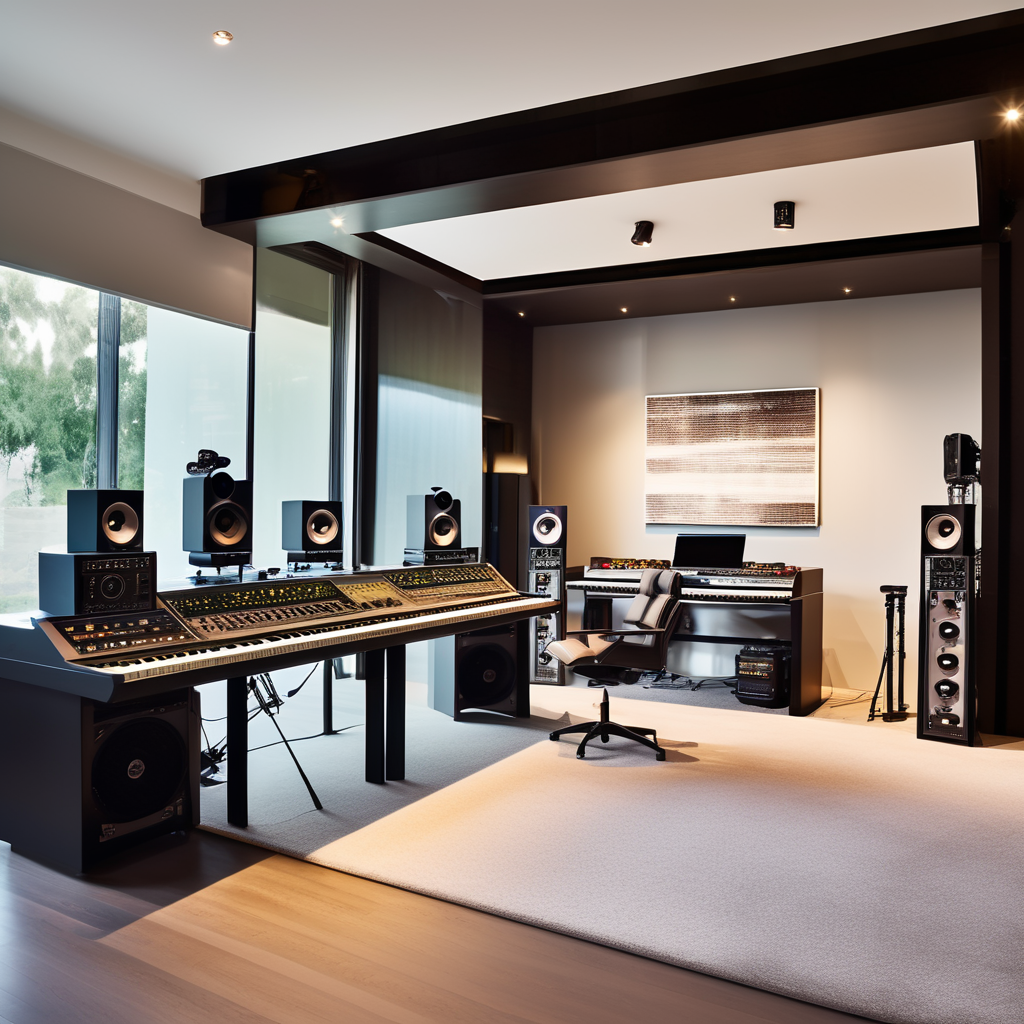


Merging Design and Functionality for Musicians
Finding the right balance between design and functionality is crucial when creating the perfect music studio interior. As a musician, you want a space that looks inspiring and supports your creative process.
One way to achieve this is by choosing furniture and equipment that are both aesthetically pleasing and practical. Opt for ergonomic chairs that provide comfort during long hours of practice or recording sessions. Invest in storage solutions that keep your instruments organized while adding visual appeal to the room.
Lighting is another essential aspect to consider. Natural light can enhance your mood and creativity, so try incorporating windows or skylights into your studio design. For artificial lighting, choose adjustable fixtures that allow you to control the intensity and direction of light based on your specific needs.

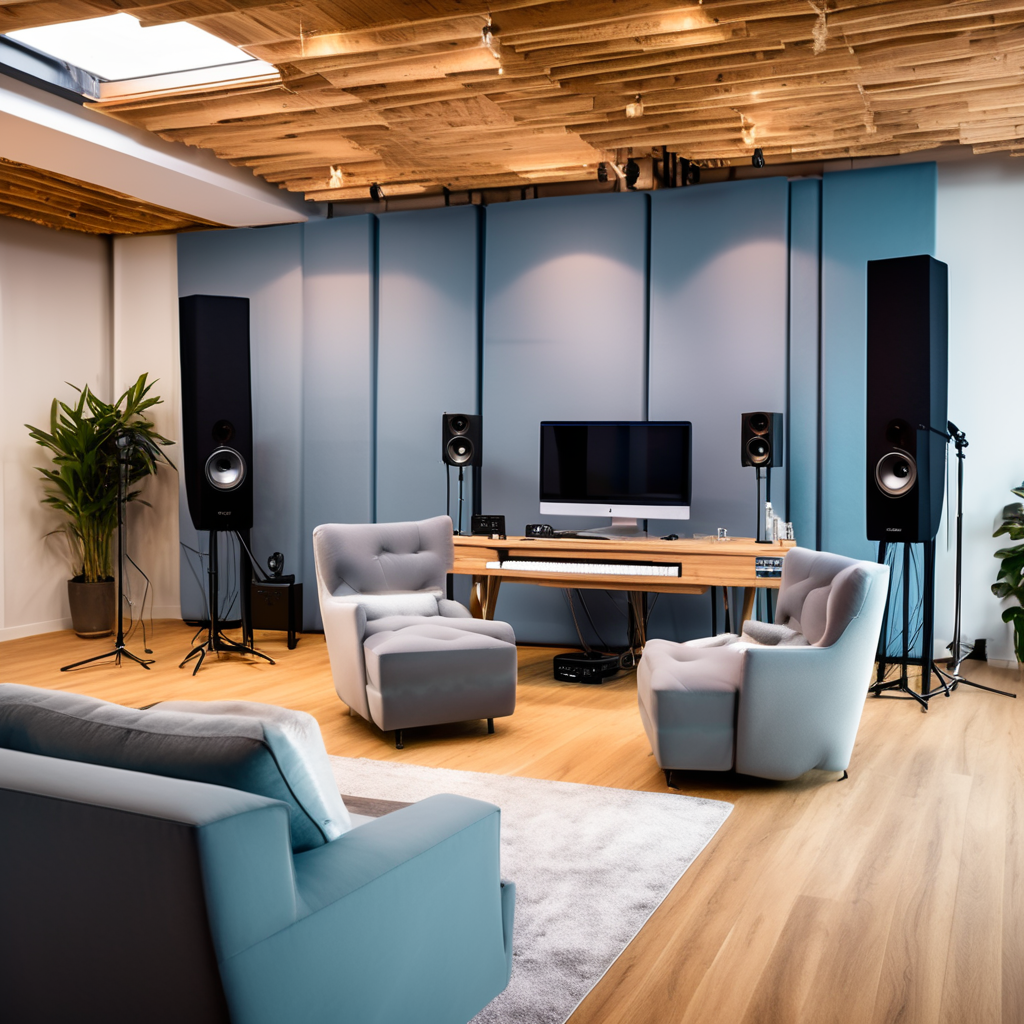
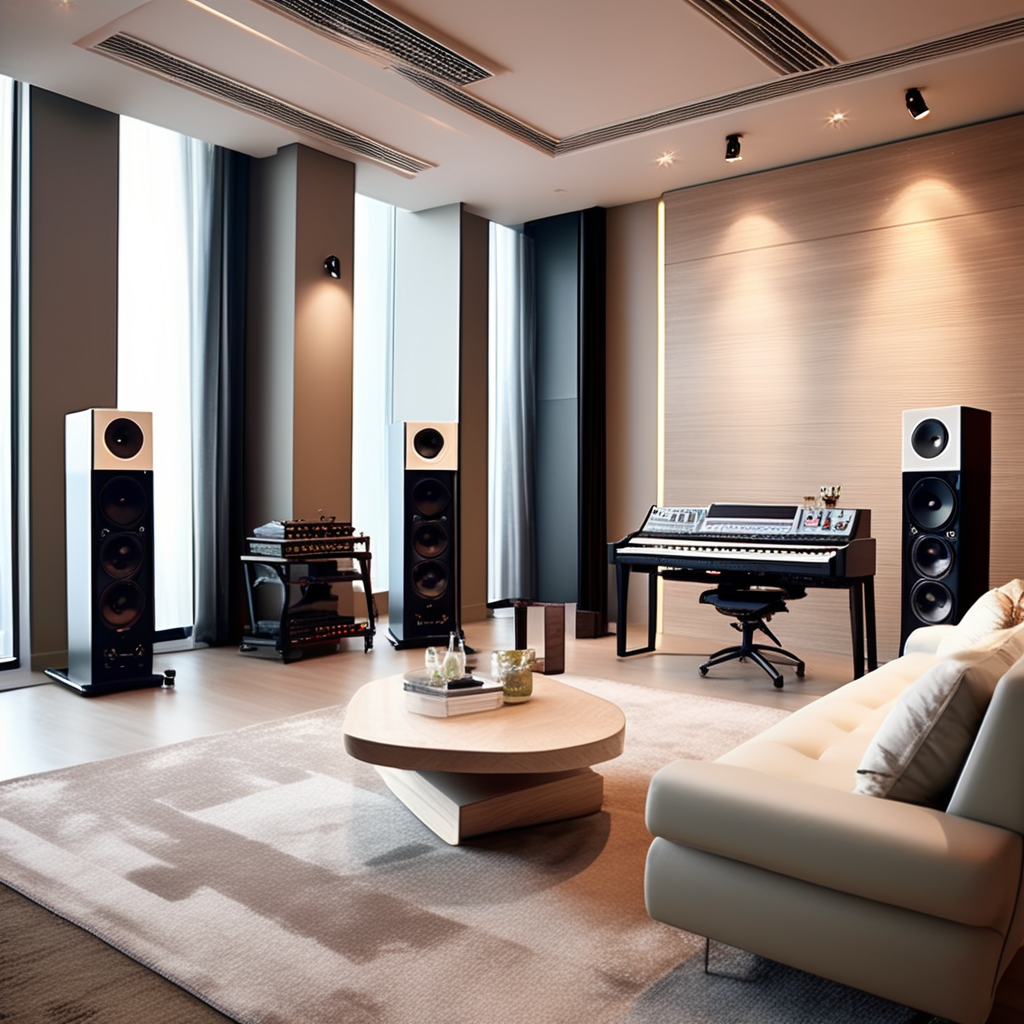
Acoustic treatment is vital in ensuring optimal sound quality within your music studio. Consider strategically installing diffusers, absorbers, and bass traps throughout the room to eliminate unwanted reflections or echoes. This will create an environment where you can accurately hear every note as intended.
Remember aesthetics! Personalize your space with artwork or decor items that reflect your musical style or inspirations. Adding plants can bring life into the studio while improving air quality.
Think about workflow optimization when designing your music studio layout. Arrange equipment to promote efficiency while maintaining an uncluttered space for creativity to flow freely.
By merging design elements with functionality-driven choices, you’ll create a music studio interior tailored specifically for musicians like yourself – one that inspires greatness without sacrificing practicality.
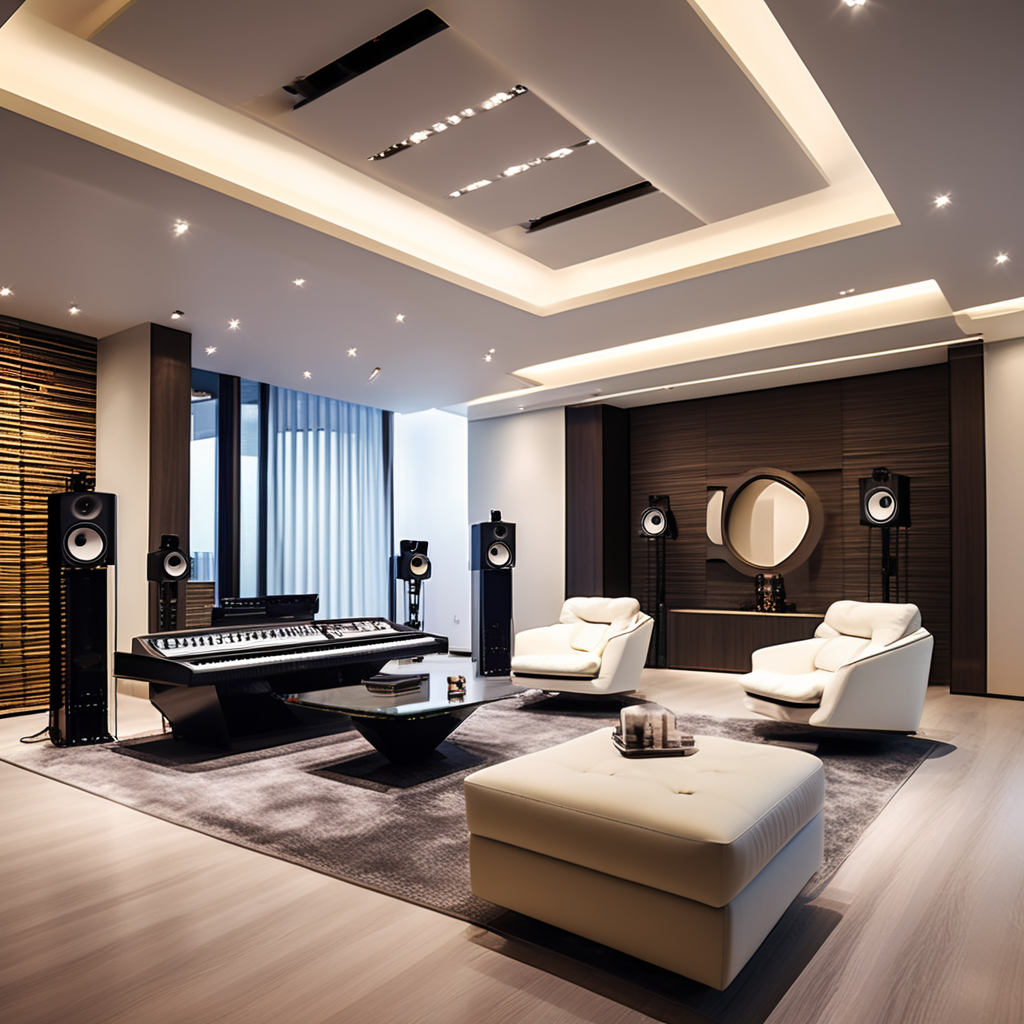

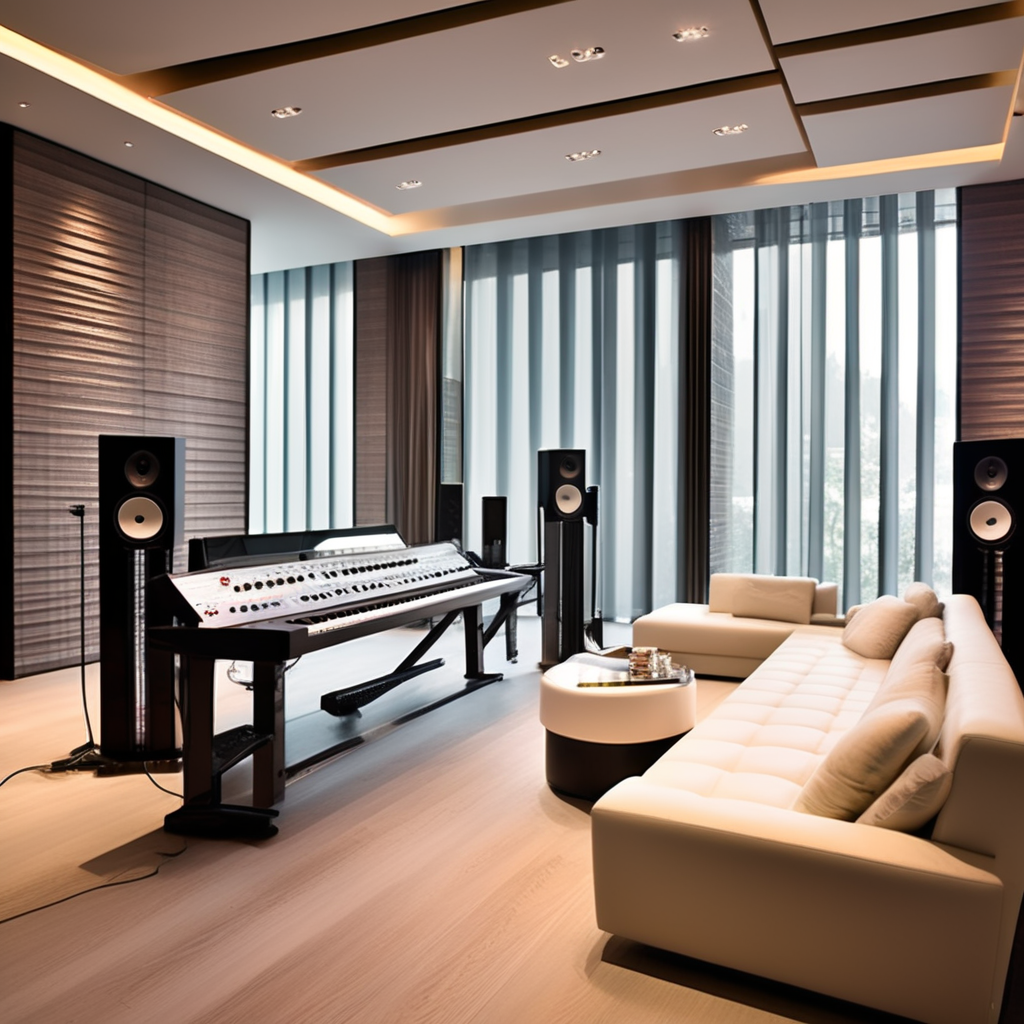
Transformative Concepts for Music Studio Spaces
Designing a music studio that inspires creativity and enhances the artistic process requires thinking outside the box. By incorporating transformative concepts, you can create a space that looks visually stunning and fosters innovation in your music production.
One concept to consider is creating a multi-functional space. Instead of having separate recording, mixing, and mastering areas, integrate them into a cohesive environment. This streamlines the workflow and allows more efficient collaboration between musicians and producers.
Another transformative idea is to incorporate natural elements into your studio design. Bringing in plants or using sustainable materials adds aesthetic appeal and helps create a calming atmosphere conducive to creative expression.
Consider incorporating technology-driven features like smart lighting systems or acoustically-treated walls with integrated soundproofing solutions. These innovations enhance functionality and aesthetics while ensuring optimal sound quality within the studio space.
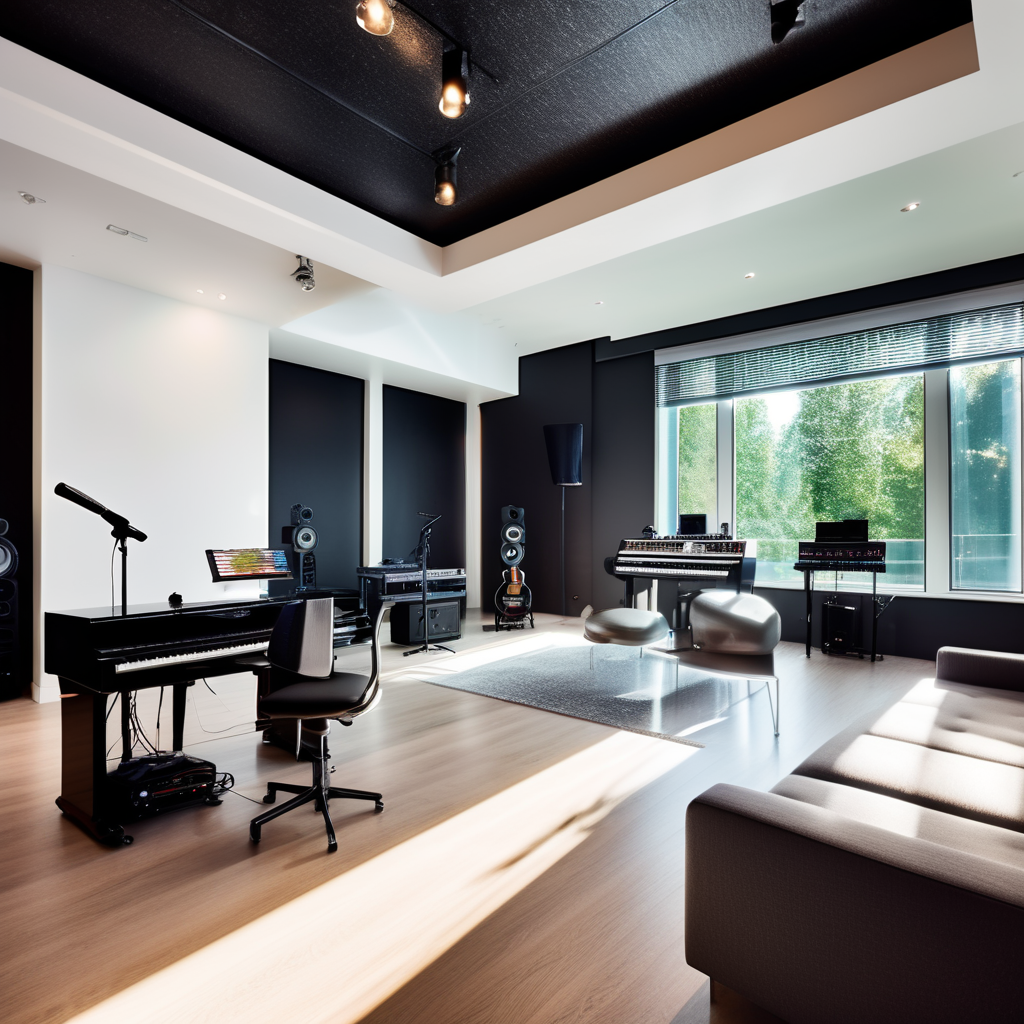
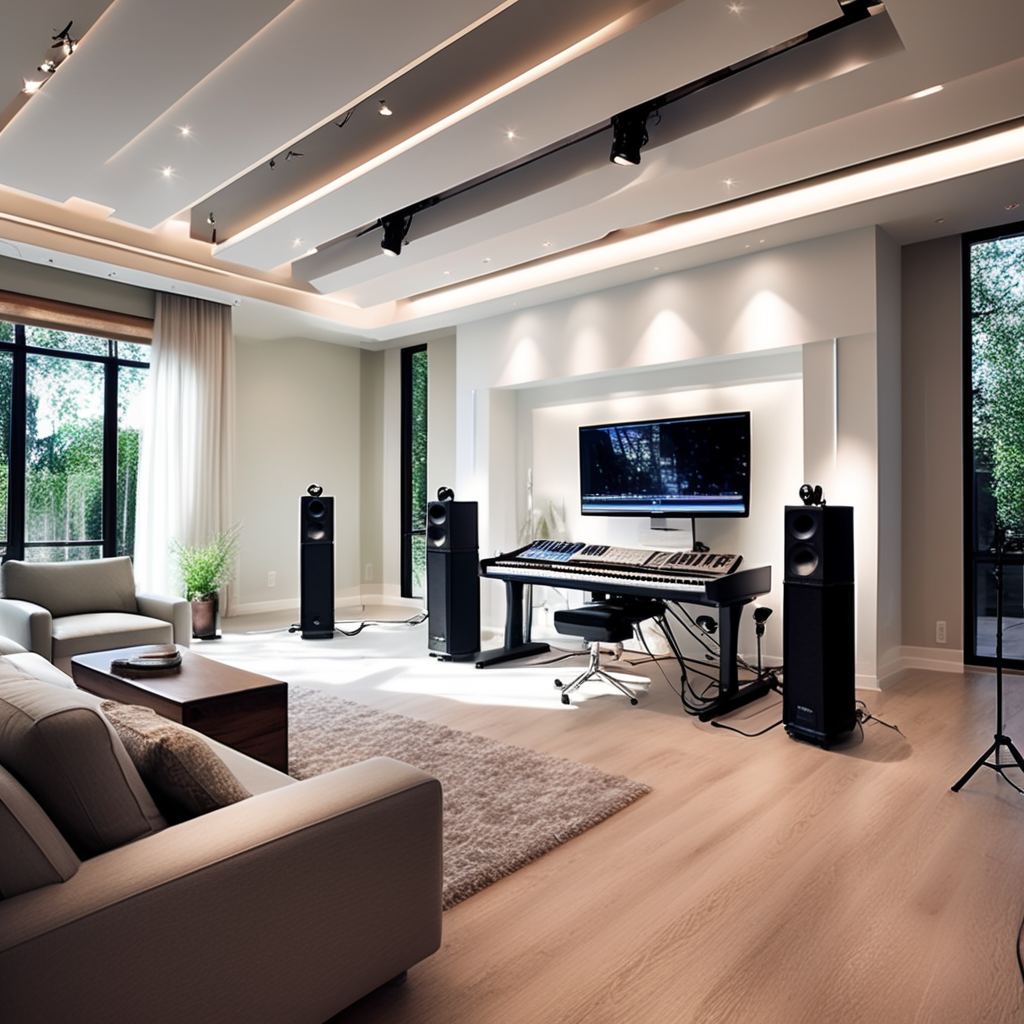
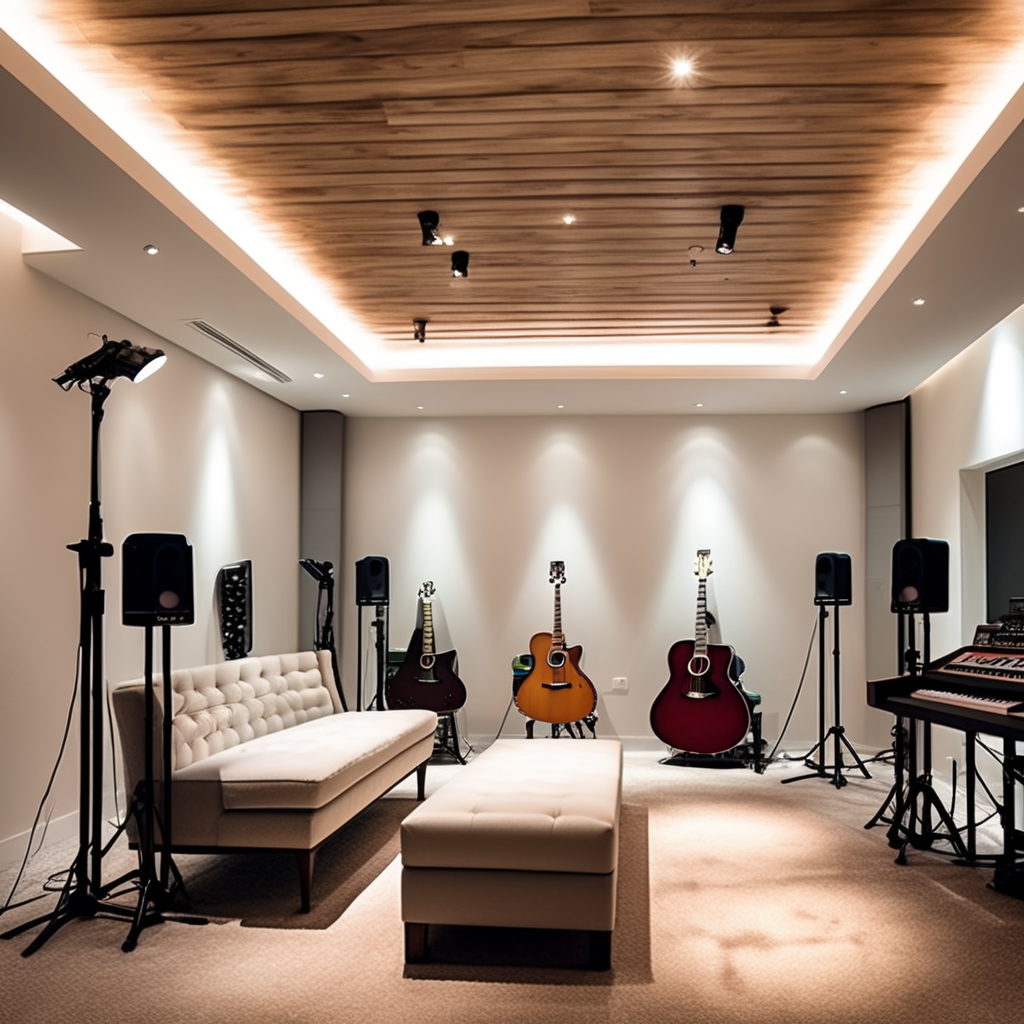
Additionally, embracing minimalism can be truly transformative. By decluttering your workspace and focusing on essential equipment, you create an environment where creativity thrives. Minimalist designs also offer better acoustics by reducing unwanted reflections.
Consider incorporating unconventional architectural elements such as curved walls or unique ceiling designs. These distinctive touches add visual interest while enhancing the overall acoustic performance of your studio.
By exploring these transformative concepts when designing your music studio interior, you can create a unique space that elevates form and function. Let your imagination run wild as you craft an inspiring environment where musical magic happens.
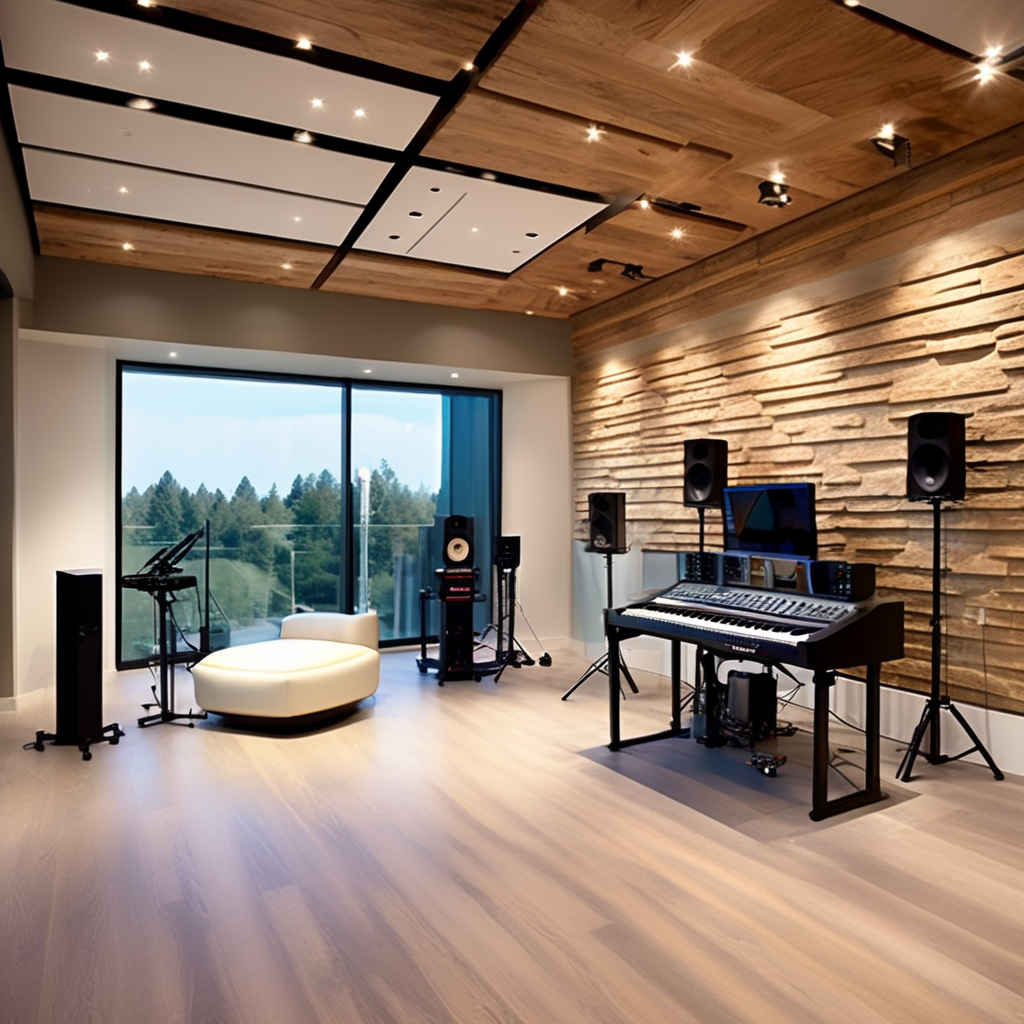

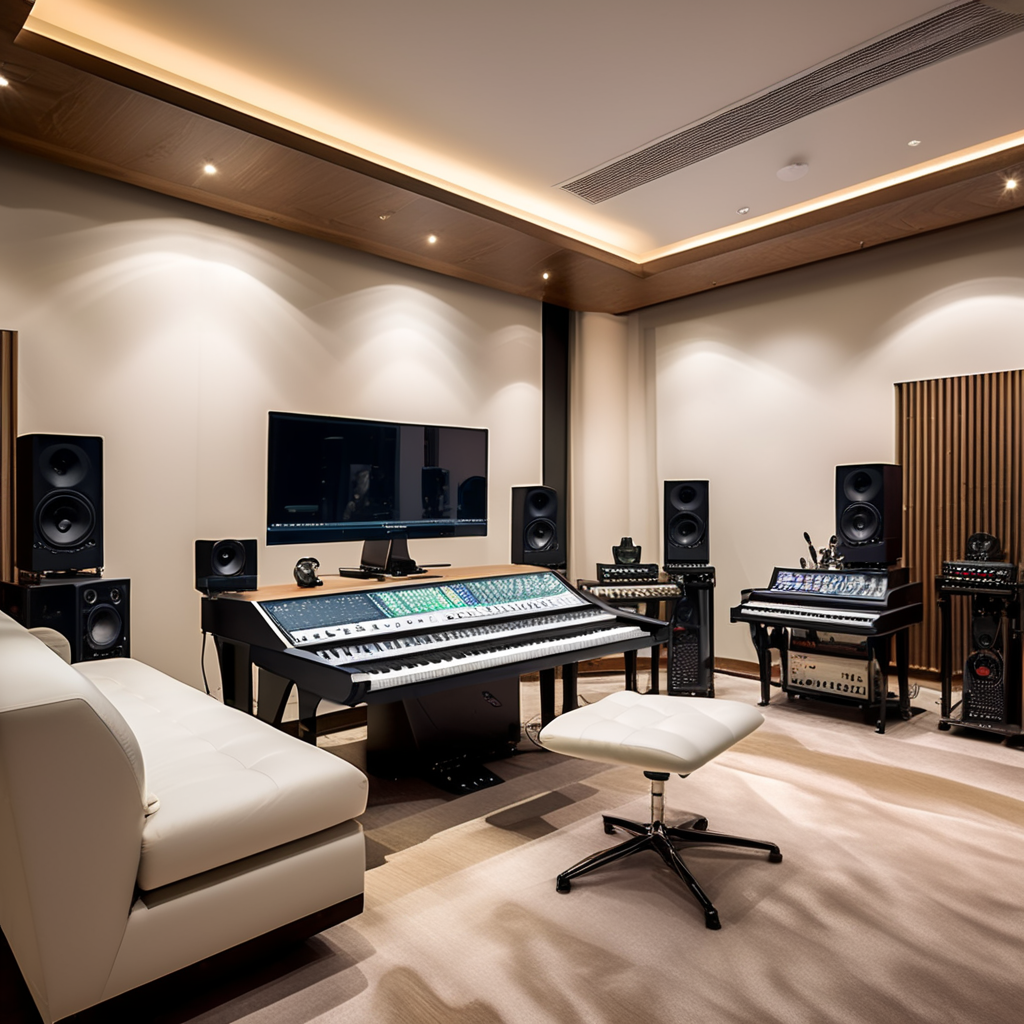
Crafting Your Ideal Music Studio Interior
Designing the perfect music studio interior is a highly personalized process requiring careful consideration of aesthetics and functionality. Each musician has unique styles, preferences, and requirements for creating the ultimate creative space. By following fundamental design principles, incorporating innovative ideas, and balancing aesthetics with practicality, you can create an inspiring environment where your musical talents can thrive.
When crafting your ideal music studio interior, start by considering the layout and flow of the space. Arrange your equipment strategically to optimize workflow and ensure easy access to all essential tools. Storage solutions such as shelves or cabinets are used to keep cables organized and out of sight for a clean and clutter-free environment.
Lighting also plays a crucial role in setting the mood in your music studio. Natural light is always preferred, but if that’s not possible due to a lack of windows or limited control over lighting conditions, consider using adjustable LED lights to customize brightness levels according to different activities or moods.
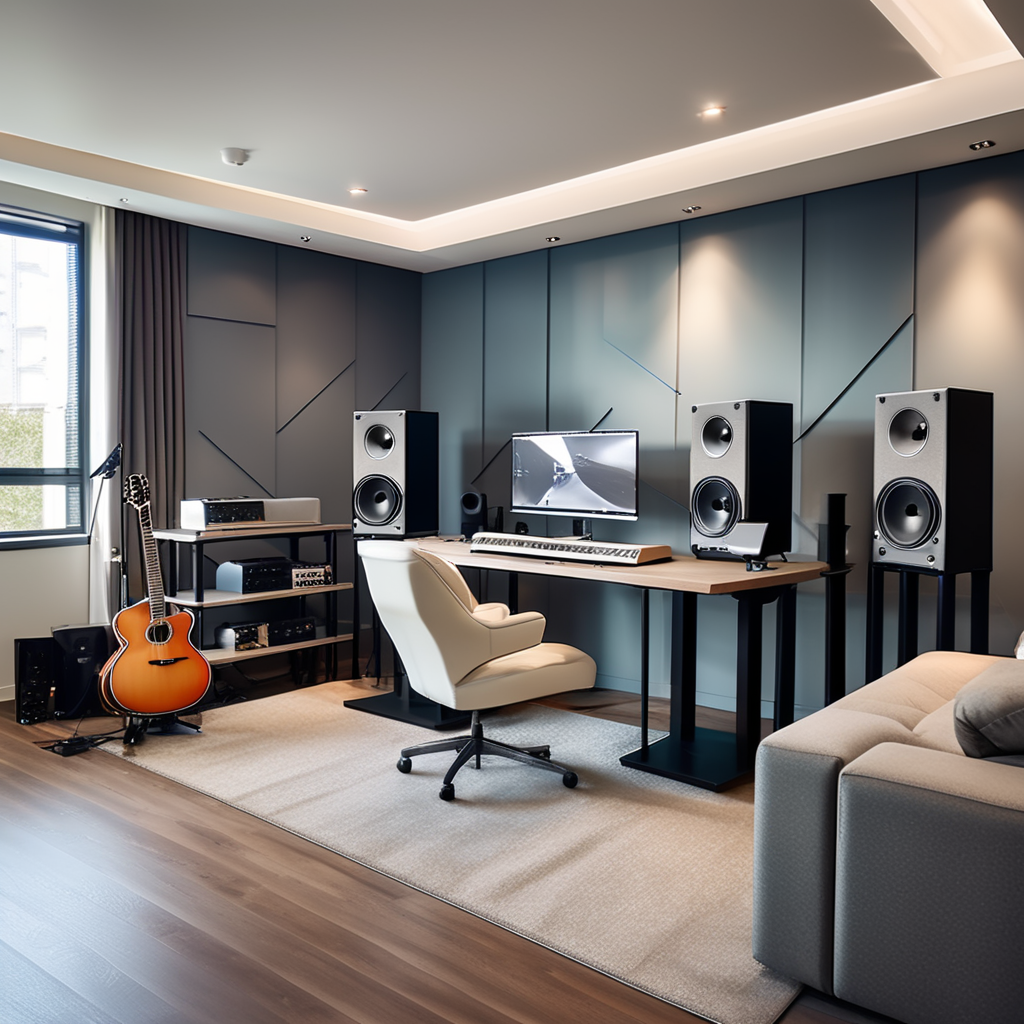
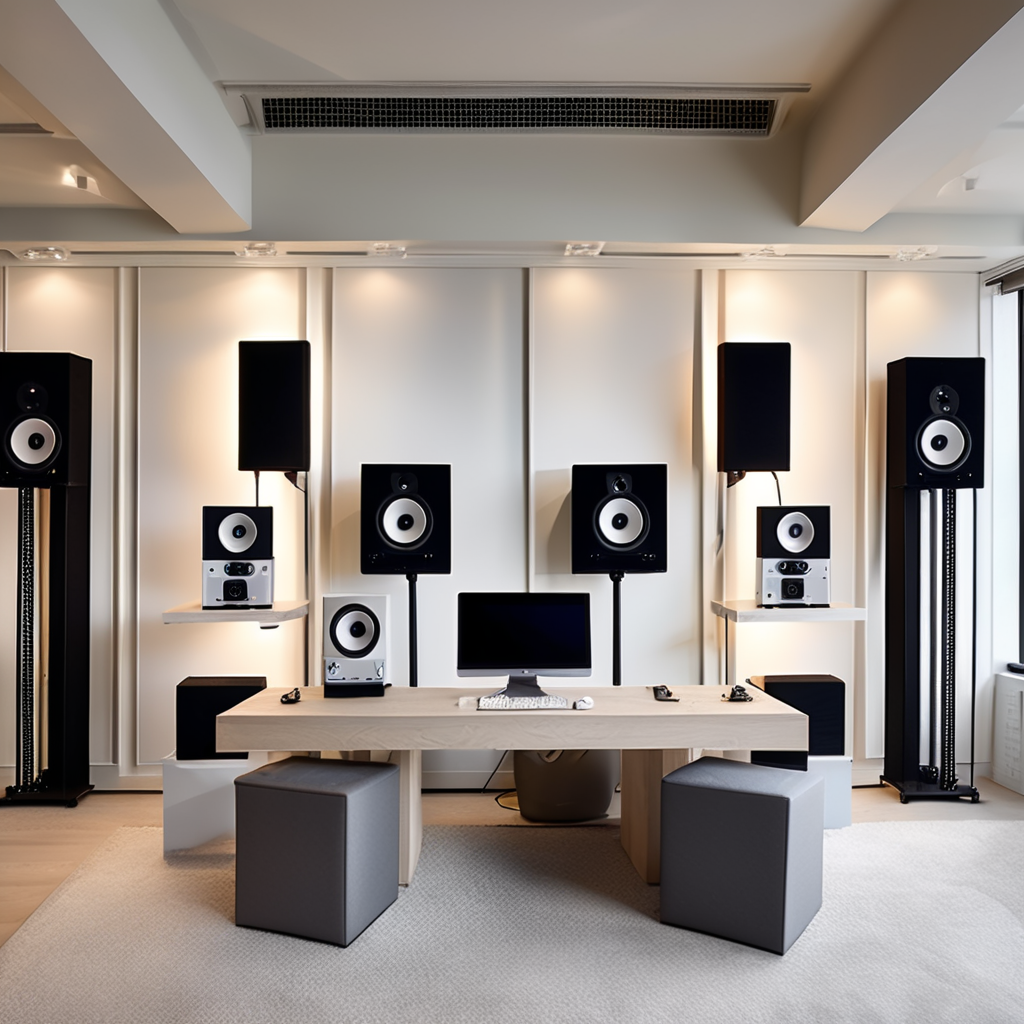
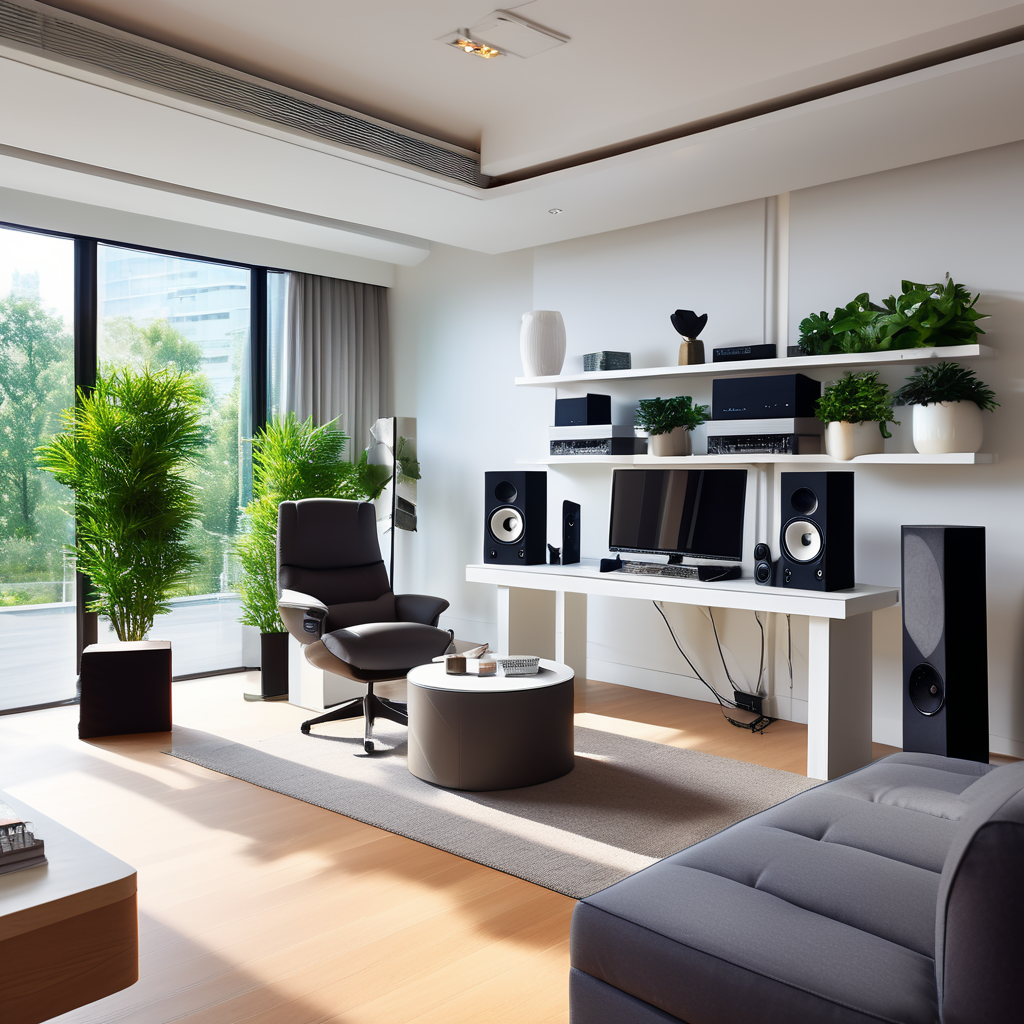
Another critical aspect is acoustics – creating an optimal sound environment is paramount for any musician or producer. Invest in quality acoustic treatments such as diffusers, absorbers, bass traps, and acoustic panels to minimize unwanted echoes or reverberations. Additionally, consider adding carpeting or rugs on the floor surfaces as they help dampen footstep noise.
Comfort should always be noticed, too; long hours in your music studio can take a toll on your body. Invest in ergonomic furniture such as an adjustable chair with adequate lumbar support so you can focus on making music without discomfort or strain.
Experiment with colors, patterns, and artwork to infuse creativity into your space while reflecting your personal style. Color psychology suggests calming hues like blues and greens for relaxation, while vibrant tones like red yellows may stimulate energy inspiration.

